
A+, Network+, Security+ Exams in a Nutshell. A Desktop Quick Reference Pawan K. Bhardwaj
- Promocja Przejdź
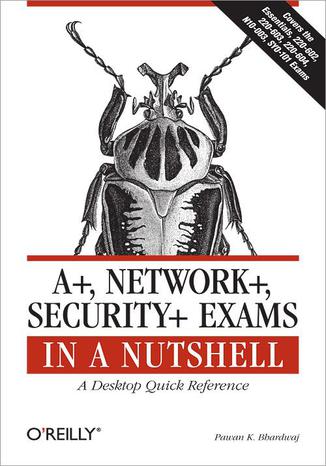



- Autor:
- Pawan K. Bhardwaj
- Ocena:
- Bądź pierwszym, który oceni tę książkę
- Stron:
- 812
- Dostępne formaty:
-
ePubMobi
 opcje wysyłki »
opcje wysyłki »
Opis
książki
:
A+, Network+, Security+ Exams in a Nutshell. A Desktop Quick Reference
If you're preparing for the new CompTIA 2006 certification in A+, or the current Network+ and Security+ certifications, you'll find this book invaluable. It provides all the information you need to get ready for these exams, including the four new A+ exams -- the required Essentials exam and three elective exams that pertain to your area of specialization.
As with other O'Reilly Nutshell books for certification exams, A+, Network+ and Security + in a Nutshell follows a proven style and approach. It reviews all of the topics needed to master each exam in a remarkably concise format, with required knowledge boiled down to the core. Instead of plowing through 500 to 700 pages to prepare for each exam, this book covers each one in approximately 150 pages. And because the objectives for the three elective A+ exams are redundant, and the book covers them in one section.
The exams covered include:
- A+ Essentials: Required for A+ 2006 certification
- EXAM 220-602: For the A+ IT Technician specialization
- EXAM 220-603: For the A+ Remote Support Technician specialization
- EXAM 220-604: For the A+ IT Depot specialization
- EXAM N10-003: For Network+ Certification
- EXAM SYO-101: For Security+ Certification
Each exam is covered in three parts: Exam Overview, Study Guide and Prep and Practice. Plenty of detailed tables and screen shots are included, along with study notes and practice questions. Once you have completed the exams successfully, you will find this all-in-one book to be a valuable reference to core administration and security skills.
Wybrane bestsellery
-
Bestseller Promocja Promocja 2za1
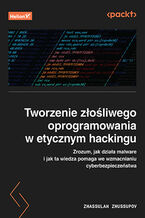 Ta książka jest kompleksowym przewodnikiem po ciemnej stronie cyberbezpieczeństwa ― zapewni Ci wiedzę i umiejętności niezbędne do skutecznego zwalczania złośliwego oprogramowania. Nauczysz się poruszać wśród zawiłości związanych z tworzeniem złośliwego oprogramowania, a także dobrze poznasz techniki i strategie stosowane przez cyberprzestępców. Zdobędziesz też praktyczne doświadczenie w projektowaniu i implementowaniu popularnych rozwiązań stosowanych w prawdziwych złośliwych aplikacjach, na przykład Carbanak, Carberp, Stuxnet, Conti, Babuk i BlackCat. Nie zabrakło tu zasad etycznego hakingu i tajników budowy złośliwego oprogramowania, jak techniki unikania wykrycia, mechanizmy persystencji i wiele innych, które poznasz dzięki lekturze.
Ta książka jest kompleksowym przewodnikiem po ciemnej stronie cyberbezpieczeństwa ― zapewni Ci wiedzę i umiejętności niezbędne do skutecznego zwalczania złośliwego oprogramowania. Nauczysz się poruszać wśród zawiłości związanych z tworzeniem złośliwego oprogramowania, a także dobrze poznasz techniki i strategie stosowane przez cyberprzestępców. Zdobędziesz też praktyczne doświadczenie w projektowaniu i implementowaniu popularnych rozwiązań stosowanych w prawdziwych złośliwych aplikacjach, na przykład Carbanak, Carberp, Stuxnet, Conti, Babuk i BlackCat. Nie zabrakło tu zasad etycznego hakingu i tajników budowy złośliwego oprogramowania, jak techniki unikania wykrycia, mechanizmy persystencji i wiele innych, które poznasz dzięki lekturze.- Druk
- PDF + ePub + Mobi pkt
(44,50 zł najniższa cena z 30 dni)
57.84 zł
89.00 zł (-35%) -
Promocja Promocja 2za1
 Rola administratora sieci komputerowej zaczyna się od jej skonfigurowania, jednak na tym absolutnie się nie kończy. Dalej musi on zadbać o to, by sieć działała poprawnie - jeśli cokolwiek pójdzie nie tak, administrator szybko dowie się o tym od użytkowników i zostanie poproszony, by równie szybko przywrócił ją do stanu poprzedniego. Drobnostka, jeśli problem okazuje się błahy i prosty do rozwiązania. Prawdziwe wyzwanie zaczyna się wtedy, kiedy naprawa usterki wymaga dogłębnej znajomości sieci, jej silnych i mocnych stron, a także metod radzenia sobie z awariami. Na szczęście powstała ta książka.
Rola administratora sieci komputerowej zaczyna się od jej skonfigurowania, jednak na tym absolutnie się nie kończy. Dalej musi on zadbać o to, by sieć działała poprawnie - jeśli cokolwiek pójdzie nie tak, administrator szybko dowie się o tym od użytkowników i zostanie poproszony, by równie szybko przywrócił ją do stanu poprzedniego. Drobnostka, jeśli problem okazuje się błahy i prosty do rozwiązania. Prawdziwe wyzwanie zaczyna się wtedy, kiedy naprawa usterki wymaga dogłębnej znajomości sieci, jej silnych i mocnych stron, a także metod radzenia sobie z awariami. Na szczęście powstała ta książka.- Druk
- PDF + ePub + Mobi pkt
(101,40 zł najniższa cena z 30 dni)
109.85 zł
169.00 zł (-35%) -
Promocja Promocja 2za1
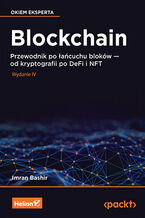 To kolejne, uzupełnione i zaktualizowane wydanie praktycznego podręcznika dla każdego, kto chce korzystać z tej technologii w praktyce. Opisuje techniczne podstawy łańcuchów bloków, kryptografii i protokołów osiągania konsensusu, przedstawia też bardziej zaawansowane zagadnienia, jak tworzenie zdecentralizowanych aplikacji (DApp) przy użyciu inteligentnych kontraktów czy też łączenie internetu rzeczy z łańcuchami bloków, korporacyjne łańcuchy bloków i tokenizacja. Dodatkowo w książce znalazły się nowe rozdziały na temat zdecentralizowanych finansów, zdecentralizowanej tożsamości, prywatności, skalowalności i bezpieczeństwa w łańcuchach bloków, a także rozważania na temat przyszłości tej fascynującej technologii.
To kolejne, uzupełnione i zaktualizowane wydanie praktycznego podręcznika dla każdego, kto chce korzystać z tej technologii w praktyce. Opisuje techniczne podstawy łańcuchów bloków, kryptografii i protokołów osiągania konsensusu, przedstawia też bardziej zaawansowane zagadnienia, jak tworzenie zdecentralizowanych aplikacji (DApp) przy użyciu inteligentnych kontraktów czy też łączenie internetu rzeczy z łańcuchami bloków, korporacyjne łańcuchy bloków i tokenizacja. Dodatkowo w książce znalazły się nowe rozdziały na temat zdecentralizowanych finansów, zdecentralizowanej tożsamości, prywatności, skalowalności i bezpieczeństwa w łańcuchach bloków, a także rozważania na temat przyszłości tej fascynującej technologii.- Druk
- PDF + ePub + Mobi pkt
(101,40 zł najniższa cena z 30 dni)
109.85 zł
169.00 zł (-35%) -
Promocja Promocja 2za1
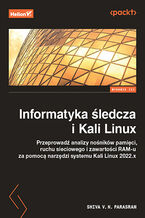 Ta książka pomoże Ci w doskonaleniu umiejętności potrzebnych na każdym etapie dochodzenia cyfrowego, od zbierania dowodów, poprzez ich analizę, po tworzenie raportów. Dzięki wielu wskazówkom i praktycznym ćwiczeniom przyswoisz techniki analizy, ekstrakcji danych i raportowania przy użyciu zaawansowanych narzędzi. Poznasz różne systemy przechowywania plików i nauczysz się wyszukiwać urządzenia sieciowe za pomocą skanerów Nmap i Netdiscover. Zapoznasz się też ze sposobami utrzymywania integralności cyfrowego materiału dowodowego. Znajdziesz tu ponadto omówienie kilku bardziej zaawansowanych tematów, takich jak pozyskiwanie ulotnych danych z sieci, nośników pamięci i systemów operacyjnych.
Ta książka pomoże Ci w doskonaleniu umiejętności potrzebnych na każdym etapie dochodzenia cyfrowego, od zbierania dowodów, poprzez ich analizę, po tworzenie raportów. Dzięki wielu wskazówkom i praktycznym ćwiczeniom przyswoisz techniki analizy, ekstrakcji danych i raportowania przy użyciu zaawansowanych narzędzi. Poznasz różne systemy przechowywania plików i nauczysz się wyszukiwać urządzenia sieciowe za pomocą skanerów Nmap i Netdiscover. Zapoznasz się też ze sposobami utrzymywania integralności cyfrowego materiału dowodowego. Znajdziesz tu ponadto omówienie kilku bardziej zaawansowanych tematów, takich jak pozyskiwanie ulotnych danych z sieci, nośników pamięci i systemów operacyjnych.- Druk
- PDF + ePub + Mobi pkt
Czasowo niedostępna
-
Promocja Promocja 2za1
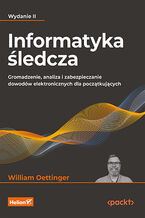 To drugie wydanie popularnego przewodnika dla śledczych. Dzięki niemu sprawnie przygotujesz się do pracy z narzędziami kryminalistycznymi i zapoznasz się ze stosowanymi w informatyce śledczej technikami. Nauczysz się pozyskiwać informacje o podejrzanych i zabezpieczać znajdujące się w sieci dane, które mogą się okazać istotne w wyjaśnieniu sprawy. Zdobędziesz także potrzebną wiedzę o topologiach sieciowych, urządzeniach i niektórych protokołach sieciowych. Bardzo ważnym elementem publikacji jest rozdział poświęcony zasadom tworzenia raportów kryminalistycznych. Cenne informacje i wskazówki zawarte w przewodniku pomogą Ci odnieść sukces w dochodzeniach korporacyjnych lub śledztwach w sprawach karnych.
To drugie wydanie popularnego przewodnika dla śledczych. Dzięki niemu sprawnie przygotujesz się do pracy z narzędziami kryminalistycznymi i zapoznasz się ze stosowanymi w informatyce śledczej technikami. Nauczysz się pozyskiwać informacje o podejrzanych i zabezpieczać znajdujące się w sieci dane, które mogą się okazać istotne w wyjaśnieniu sprawy. Zdobędziesz także potrzebną wiedzę o topologiach sieciowych, urządzeniach i niektórych protokołach sieciowych. Bardzo ważnym elementem publikacji jest rozdział poświęcony zasadom tworzenia raportów kryminalistycznych. Cenne informacje i wskazówki zawarte w przewodniku pomogą Ci odnieść sukces w dochodzeniach korporacyjnych lub śledztwach w sprawach karnych.- Druk
- PDF + ePub + Mobi pkt
(47,40 zł najniższa cena z 30 dni)
51.35 zł
79.00 zł (-35%) -
Promocja Promocja 2za1
 Hakowanie nie zawsze musi być złe. Terminem tym określa się również sprytne sposoby używania sprzętu czy oprogramowania do czegoś nowego. Z kolei etyczne hakowanie polega na zastosowaniu technik ataków do testowania systemu komputerowego, aby znaleźć jego słabe punkty, usunąć je i w ten sposób wzmocnić jego bezpieczeństwo. Opanowanie metod, jakimi posługują się cyberprzestępcy, pozwala zatem zrozumieć naturę zagrożeń w cyfrowym świecie i skutecznie się przed nimi bronić.
Hakowanie nie zawsze musi być złe. Terminem tym określa się również sprytne sposoby używania sprzętu czy oprogramowania do czegoś nowego. Z kolei etyczne hakowanie polega na zastosowaniu technik ataków do testowania systemu komputerowego, aby znaleźć jego słabe punkty, usunąć je i w ten sposób wzmocnić jego bezpieczeństwo. Opanowanie metod, jakimi posługują się cyberprzestępcy, pozwala zatem zrozumieć naturę zagrożeń w cyfrowym świecie i skutecznie się przed nimi bronić.- Druk
- PDF + ePub + Mobi pkt
(29,94 zł najniższa cena z 30 dni)
32.43 zł
49.90 zł (-35%) -
Promocja Promocja 2za1
 Ta książka jest doskonałym wprowadzeniem do inżynierii społecznej. Omawia koncepcje psychologiczne leżące u podstaw tej dyscypliny i jej aspekty etyczne. Zaprezentowano tu narzędzie ułatwiające korzystanie z technik inżynierii społecznej w atakach socjotechnicznych. Następnie szczegółowo pokazano etapy złożonego ataku phishingowego, prowadzonego w celu kradzieży danych uwierzytelniających użytkowników. Nie zabrakło opisów sztuczek stosowanych w celu oszukania użytkowników i obrońców. W przewodniku znajdziesz ponadto liczne techniki proaktywnej ochrony zespołu przed atakami socjotechnicznymi, a także strategie szybkiego odtwarzania systemu po udanych atakach. Poznasz również techniczne sposoby kontroli poczty elektronicznej i narzędzia do analizy potencjalnie podejrzanych wiadomości.
Ta książka jest doskonałym wprowadzeniem do inżynierii społecznej. Omawia koncepcje psychologiczne leżące u podstaw tej dyscypliny i jej aspekty etyczne. Zaprezentowano tu narzędzie ułatwiające korzystanie z technik inżynierii społecznej w atakach socjotechnicznych. Następnie szczegółowo pokazano etapy złożonego ataku phishingowego, prowadzonego w celu kradzieży danych uwierzytelniających użytkowników. Nie zabrakło opisów sztuczek stosowanych w celu oszukania użytkowników i obrońców. W przewodniku znajdziesz ponadto liczne techniki proaktywnej ochrony zespołu przed atakami socjotechnicznymi, a także strategie szybkiego odtwarzania systemu po udanych atakach. Poznasz również techniczne sposoby kontroli poczty elektronicznej i narzędzia do analizy potencjalnie podejrzanych wiadomości.- Druk
- PDF + ePub + Mobi pkt
(41,40 zł najniższa cena z 30 dni)
44.85 zł
69.00 zł (-35%) -
Promocja Promocja 2za1
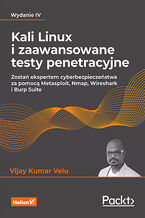 Jeśli masz już pewne umiejętności pentestera, dzięki tej książce poszerzysz swoją wiedzę o zaawansowanych narzędziach dostępnych w Kali Linux, a także nauczysz się wyrafinowanych taktyk stosowanych przez prawdziwych hakerów do atakowania sieci komputerowych. Omówiono tu różne sposoby instalowania i uruchamiania systemu Kali Linux w środowisku maszyn wirtualnych i kontenerów. Opisano też szereg zagadnień związanych z pasywnym i aktywnym rozpoznawaniem środowiska celu, w tym z używaniem skanerów podatności i modelowaniem zagrożeń. Zaprezentowano wiele zaawansowanych metod prowadzenia ataków na sieci komputerowe, urządzenia IoT, systemy wbudowane i urządzenia wykorzystujące połączenia bezprzewodowe.
Jeśli masz już pewne umiejętności pentestera, dzięki tej książce poszerzysz swoją wiedzę o zaawansowanych narzędziach dostępnych w Kali Linux, a także nauczysz się wyrafinowanych taktyk stosowanych przez prawdziwych hakerów do atakowania sieci komputerowych. Omówiono tu różne sposoby instalowania i uruchamiania systemu Kali Linux w środowisku maszyn wirtualnych i kontenerów. Opisano też szereg zagadnień związanych z pasywnym i aktywnym rozpoznawaniem środowiska celu, w tym z używaniem skanerów podatności i modelowaniem zagrożeń. Zaprezentowano wiele zaawansowanych metod prowadzenia ataków na sieci komputerowe, urządzenia IoT, systemy wbudowane i urządzenia wykorzystujące połączenia bezprzewodowe.- Druk
- PDF + ePub + Mobi pkt
(77,40 zł najniższa cena z 30 dni)
83.85 zł
129.00 zł (-35%) -
Promocja Promocja 2za1
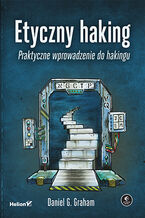 Przeczytasz o tym, jak wykrywać nowe luki w oprogramowaniu, jak tworzyć trojany i rootkity, a także jak używać techniki wstrzykiwania SQL. Zapoznasz się również z szeroką gamą narzędzi do przeprowadzania testów penetracyjnych (takich jak Metasploit Framework, mimikatz i BeEF), rozeznasz się w działaniu zaawansowanych fuzzerów i sposobach szyfrowania ruchu internetowego. Poznasz też wewnętrzne mechanizmy złośliwego oprogramowania.
Przeczytasz o tym, jak wykrywać nowe luki w oprogramowaniu, jak tworzyć trojany i rootkity, a także jak używać techniki wstrzykiwania SQL. Zapoznasz się również z szeroką gamą narzędzi do przeprowadzania testów penetracyjnych (takich jak Metasploit Framework, mimikatz i BeEF), rozeznasz się w działaniu zaawansowanych fuzzerów i sposobach szyfrowania ruchu internetowego. Poznasz też wewnętrzne mechanizmy złośliwego oprogramowania.- Druk
- PDF + ePub + Mobi pkt
(53,40 zł najniższa cena z 30 dni)
57.84 zł
89.00 zł (-35%) -
Promocja Promocja 2za1
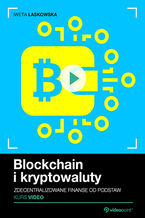 Opublikowany w 2008 roku whitepaper Bitcoin: A Peer-to-Peer Electronic Cash System na zawsze odmienił świat biznesu. Bitcoin był pierwszą implementacja Blockchaina, zdecentralizowanej bazy danych chronionej kryptograficznie. Za nim ruszyła lawina projektów, zarówno na sieciach publicznych (Ethereum, Solana, Cosmos, Polkadot), jak i prywatnych (Hyperledger Fabric, Corda, Quorum). Dziś, kapitalizacja rynkowa rynku kryptowalut wynosi ponad 1,66 biliona dolarów, a Bitcoin zajmuje stabilne i wysokie miejsce w globalnej kapitalizacji rynkowej obok takich gigantów jak Amazon, Meta Platforms (ex-Facebook), czy Tesla.
Opublikowany w 2008 roku whitepaper Bitcoin: A Peer-to-Peer Electronic Cash System na zawsze odmienił świat biznesu. Bitcoin był pierwszą implementacja Blockchaina, zdecentralizowanej bazy danych chronionej kryptograficznie. Za nim ruszyła lawina projektów, zarówno na sieciach publicznych (Ethereum, Solana, Cosmos, Polkadot), jak i prywatnych (Hyperledger Fabric, Corda, Quorum). Dziś, kapitalizacja rynkowa rynku kryptowalut wynosi ponad 1,66 biliona dolarów, a Bitcoin zajmuje stabilne i wysokie miejsce w globalnej kapitalizacji rynkowej obok takich gigantów jak Amazon, Meta Platforms (ex-Facebook), czy Tesla.- Videokurs pkt
(23,80 zł najniższa cena z 30 dni)
53.55 zł
119.00 zł (-55%)
Ebooka "A+, Network+, Security+ Exams in a Nutshell. A Desktop Quick Reference" przeczytasz na:
-
czytnikach Inkbook, Kindle, Pocketbook, Onyx Booxs i innych
-
systemach Windows, MacOS i innych
-
systemach Windows, Android, iOS, HarmonyOS
-
na dowolnych urządzeniach i aplikacjach obsługujących formaty: PDF, EPub, Mobi
Masz pytania? Zajrzyj do zakładki Pomoc »
Szczegóły książki
- ISBN Ebooka:
- 978-05-965-5151-3, 9780596551513
- Data wydania ebooka :
-
2007-03-27
 Data wydania ebooka często jest dniem wprowadzenia tytułu do sprzedaży i może nie być równoznaczna
z datą wydania książki papierowej. Dodatkowe informacje możesz znaleźć w darmowym fragmencie.
Jeśli masz wątpliwości skontaktuj się z nami sklep@helion.pl.
Data wydania ebooka często jest dniem wprowadzenia tytułu do sprzedaży i może nie być równoznaczna
z datą wydania książki papierowej. Dodatkowe informacje możesz znaleźć w darmowym fragmencie.
Jeśli masz wątpliwości skontaktuj się z nami sklep@helion.pl.
- Język publikacji:
- angielski
- Rozmiar pliku ePub:
- 4.3MB
- Rozmiar pliku Mobi:
- 10.8MB
- Zgłoś erratę
- Kategorie:
Hacking
Hacking » Inne
Dostępność produktu
Produkt nie został jeszcze oceniony pod kątem ułatwień dostępu lub nie podano żadnych informacji o ułatwieniach dostępu lub są one niewystarczające. Prawdopodobnie Wydawca/Dostawca jeszcze nie umożliwił dokonania walidacji produktu lub nie przekazał odpowiednich informacji na temat jego dostępności.
Spis treści książki
- A+, Network+, Security+ Exams in a Nutshell
- SPECIAL OFFER: Upgrade this ebook with OReilly
- Preface
- Conventions Used in This Book
- Other Study Resources
- How to Contact Us
- Acknowledgments
- I. A+ Essentials
- 1. Overview of A+ Essentials Exam
- 1.1. Areas of Study for the A+ Essentials Exam
- 1.1.1. Personal Computer Components
- 1.1.2. Laptops and Portable Devices
- 1.1.3. Operating Systems
- 1.1.4. Printers and Scanners
- 1.1.5. Networks
- 1.1.6. Security
- 1.1.7. Safety and Environmental Issues
- 1.1.8. Communication and Professionalism
- 1.1. Areas of Study for the A+ Essentials Exam
- 2. A+ Essentials Study Guide
- 2.1. Personal Computer Components
- 2.1.1. Components of Motherboards
- 2.1.1.1. Form Factors
- 2.1.1.2. Components of motherboards
- 2.1.1.2.1. Chipsets
- 2.1.1.2.2. BIOS/Firmware
- 2.1.1.2.3. Memory slots
- 2.1.1.2.4. External cache memory
- 2.1.1.2.5. Processor sockets
- 2.1.1.2.6. Integrated I/O ports
- 2.1.1.2.7. Expansion bus slots
- 2.1.1.2.8. Floppy disk and hard disk connectors
- 2.1.1.2.9. Power supply connectors
- 2.1.1.3. Power supplies
- 2.1.1.3.1. Power supply connectors
- 2.1.1.4. Processors
- 2.1.1.4.1. Characteristics of processors
- 2.1.1.5. Memory
- 2.1.1.5.1. Error checking in memory
- 2.1.1.5.2. Types of memory
- 2.1.1.5.3. Memory modules
- 2.1.1.6. Storage devices
- 2.1.1.6.1. Floppy disk drives
- 2.1.1.6.2. Hard disk drives
- 2.1.1.6.3. CD-ROM drives
- 2.1.1.6.4. CD burners
- 2.1.1.6.5. DVD-ROM drives
- 2.1.1.6.6. DVD burners
- 2.1.1.6.7. Tape drives
- 2.1.1.6.8. Flash memory
- 2.1.1.6.9. External disk drives
- 2.1.1.7. Display devices
- 2.1.1.7.1. Video technologies
- 2.1.1.7.2. Types of monitors
- 2.1.1.8. Input devices
- 2.1.1.8.1. Mouse
- 2.1.1.8.2. Keyboard
- 2.1.1.8.3. Barcode reader
- 2.1.1.8.4. Multimedia devices
- 2.1.1.8.5. Biometric devices
- 2.1.1.8.6. Touch screen
- 2.1.1.9. Adapter cards
- 2.1.1.9.1. Video card
- 2.1.1.9.2. Network card
- 2.1.1.9.3. Sound card
- 2.1.1.9.4. Modem card
- 2.1.1.9.5. I/O cards
- 2.1.1.10. Types of port connectors
- 2.1.1.10.1. Universal Serial Bus (USB)
- 2.1.1.10.2. Firewire
- 2.1.1.10.3. Parallel
- 2.1.1.10.4. Serial
- 2.1.1.10.5. RJ-Series
- 2.1.1.10.6. PS/2 (mini-DIN)
- 2.1.1.10.7. Centronics
- 2.1.1.10.8. A/V jacks
- 2.1.1.11. Cooling systems
- 2.1.1.11.1. Fans
- 2.1.1.11.2. CPU cooling
- 2.1.2. Installing, Configuring, and Optimizing Personal Computer Components
- 2.1.2.1. Installing storage devices
- 2.1.2.1.1. Drive preparation
- 2.1.2.2. Installing/upgrading display devices
- 2.1.2.3. Installing and removing input/multimedia devices
- 2.1.2.1. Installing storage devices
- 2.1.3. Troubleshooting Tools and Procedures
- 2.1.3.1. Basic troubleshooting theory
- 2.1.3.2. Basic diagnostic procedures
- 2.1.3.3. Basic troubleshooting tools
- 2.1.3.3.1. Hardware tools
- 2.1.3.3.2. Software tools and utilities
- 2.1.3.4. Identifying problems
- 2.1.3.4.1. Motherboard and CPU problems
- 2.1.3.4.2. Power supply problems
- 2.1.3.4.3. Memory problems
- 2.1.3.4.4. Problems with display devices
- 2.1.3.4.5. Problems with input devices
- 2.1.3.4.6. Hard disk problems
- 2.1.3.4.7. CD/DVD problems
- 2.1.3.4.8. Adapter card problems
- 2.1.4. Preventive Maintenance (PM)
- 2.1.4.1. Scheduling preventive maintenance
- 2.1.4.2. Visual and audio inspection
- 2.1.4.3. Driver and firmware updates
- 2.1.4.4. Heat and temperature
- 2.1.4.5. Humidity
- 2.1.4.6. PM for display devices
- 2.1.4.7. PM for power supply
- 2.1.4.8. PM for input devices
- 2.1.4.9. PM for storage devices
- 2.1.4.10. PM for motherboards, memory, and adapters
- 2.1.1. Components of Motherboards
- 2.2. Laptops and Portable Devices
- 2.2.1. Overview of Laptop Components
- 2.2.1.1. Motherboards
- 2.2.1.2. Processors
- 2.2.1.3. Power supplies
- 2.2.1.4. Memory
- 2.2.1.4.1. Small Outline-Dual In-line Memory Module (SO-DIMM)
- 2.2.1.4.2. Micro Dual In-line Memory Module (MicroDIMM)
- 2.2.1.5. Display devices
- 2.2.1.5.1. LCD technologies
- 2.2.1.5.2. LCD resolution and aspect ratio
- 2.2.1.5.3. Native resolution
- 2.2.1.5.4. Contrast ratio
- 2.2.1.6. Storage devices
- 2.2.1.6.1. Hard drive
- 2.2.1.6.2. CD/DVD drives
- 2.2.1.6.3. Floppy drive
- 2.2.1.7. Input devices
- 2.2.1.7.1. Keyboards
- 2.2.1.7.2. Pointing devices
- 2.2.1.8. Expansion buses and ports
- 2.2.1.8.1. Mini PCI
- 2.2.1.8.2. Personal Computer Memory Card International Association (PCMCIA)
- 2.2.1.8.3. ExpressBus
- 2.2.1.8.4. USB ports
- 2.2.1.8.5. Mouse and keyboard port
- 2.2.1.8.6. Monitor port
- 2.2.1.8.7. Communication ports
- 2.2.1.9. Docking station
- 2.2.2. Power Management and Device Removal
- 2.2.2.1. Overview of ACPI standards
- 2.2.2.2. Power options in Windows
- 2.2.2.3. Removing laptop-specific hardware
- 2.2.3. Troubleshooting Laptops
- 2.2.3.1. Power problems
- 2.2.3.2. Input problems
- 2.2.3.3. Display problems
- 2.2.3.4. Networking problems
- 2.2.3.5. Problems with external devices
- 2.2.4. Preventive Maintenance (PM)
- 2.2.4.1. Operating environment
- 2.2.4.2. Handling
- 2.2.1. Overview of Laptop Components
- 2.3. Operating Systems
- 2.3.1. Overview of Operating Systems
- 2.3.1.1. Windows
- 2.3.1.1.1. Windows 1
- 2.3.1.1.2. Windows 2
- 2.3.1.1.3. Windows 3.x
- 2.3.1.1.4. Windows 3.1
- 2.3.1.1.5. Windows 3.11
- 2.3.1.1.6. Windows 95
- 2.3.1.1.7. Windows 98, Windows ME, and Windows NT
- 2.3.1.1.8. Windows 2000
- 2.3.1.1.9. Windows XP
- 2.3.1.1.10. Windows Server 2003
- 2.3.1.1.11. Windows Vista
- 2.3.1.2. MAC OS X
- 2.3.1.3. Linux
- 2.3.1.4. Working with Windows interfaces
- 2.3.1.4.1. Windows desktop
- 2.3.1.4.2. Taskbar
- 2.3.1.4.3. Start menu
- 2.3.1.4.4. Desktop icons
- 2.3.1.5. Control Panel
- 2.3.1.6. The System Control Panel
- 2.3.1.7. Windows Registry
- 2.3.1.7.1. Registry Editor
- 2.3.1.8. Virtual memory
- 2.3.1.9. Windows system files
- 2.3.1.10. Managing disks
- 2.3.1.10.1. Basic disks
- 2.3.1.10.2. Dynamic disks
- 2.3.1.10.3. Creating partitions
- 2.3.1.10.4. Converting from Basic disk to Dynamic disk
- 2.3.1.10.5. Converting from Dynamic disk to Basic disk
- 2.3.1.10.6. Filesystems
- 2.3.1.11. Managing files and folders
- 2.3.1.11.1. File extensions
- 2.3.1.11.2. File attributes
- 2.3.1.11.3. File permissions
- 2.3.1.1. Windows
- 2.3.2. Installing and Configuring Operating Systems
- 2.3.2.1. Installing the operating system
- 2.3.2.1.1. Minimum hardware requirements
- 2.3.2.1.2. Hardware compatibility
- 2.3.2.1.3. Installation methods
- 2.3.2.1.4. Installation options
- 2.3.2.1.5. Disk partition
- 2.3.2.2. Installing Windows XP Professional
- 2.3.2.2.1. Text mode
- 2.3.2.2.2. GUI mode
- 2.3.2.2.3. Installing over the network
- 2.3.2.3. Installing Windows 2000 Professional
- 2.3.2.3.1. Completing post-installation tasks
- 2.3.2.4. Upgrading an operating system
- 2.3.2.4.1. Available upgrade paths
- 2.3.2.4.2. Checking hardware compatibility
- 2.3.2.4.3. Checking application compatibility
- 2.3.2.4.4. Installing additional Windows components
- 2.3.2.4.5. Network compatibility
- 2.3.2.4.6. Upgrade utility
- 2.3.2.4.7. Backing up user data
- 2.3.2.4.8. Performing the upgrade
- 2.3.2.5. Installing devices and drivers
- 2.3.2.5.1. Identifying the PnP and non-PnP devices
- 2.3.2.5.2. Permissions and rights
- 2.3.2.5.3. Driver signing
- 2.3.2.5.4. Obtaining device drivers
- 2.3.2.5.5. Connecting the device
- 2.3.2.5.6. Installing and configuring the driver
- 2.3.2.5.7. Adding devices in Windows 2000
- 2.3.2.5.8. Adding devices in Windows XP
- 2.3.2.5.9. Verifying device driver installation
- 2.3.2.6. Optimizing performance
- 2.3.2.6.1. Virtual memory
- 2.3.2.6.2. Defragmenting hard disks
- 2.3.2.6.3. Temporary files
- 2.3.2.6.4. Configuring services
- 2.3.2.1. Installing the operating system
- 2.3.3. Troubleshooting Techniques
- 2.3.3.1. Understanding boot sequence
- 2.3.3.1.1. Pre-boot sequence
- 2.3.3.1.2. Boot sequence
- 2.3.3.1.3. Kernel Load and initialization
- 2.3.3.1.4. Logon process
- 2.3.3.2. Understanding the Advanced Boot Options
- 2.3.3.3. Recovery Console
- 2.3.3.4. System Restore (Windows XP)
- 2.3.3.5. Automated System Recovery (Windows XP)
- 2.3.3.6. Emergency Repair Disk (Windows 2000)
- 2.3.3.7. Troubleshooting procedures
- 2.3.3.7.1. Talking to the user
- 2.3.3.7.2. Gathering information
- 2.3.3.7.3. Identifying potential causes
- 2.3.3.7.4. Isolating the problem
- 2.3.3.7.5. Testing related components
- 2.3.3.7.6. Apply a solution and test results
- 2.3.3.7.7. Document the solution
- 2.3.3.8. Operational problems
- 2.3.3.8.1. Blue Screen
- 2.3.3.8.2. System lock up
- 2.3.3.8.3. I/O device not accessible or does not function
- 2.3.3.8.4. Application failed to start
- 2.3.3.8.5. Printing problems
- 2.3.3.8.6. Dr. Watson errors
- 2.3.3.8.7. Illegal operation
- 2.3.3.8.8. General protection fault (GPF)
- 2.3.3.9. Common error messages
- 2.3.3.10. Troubleshooting utilities
- 2.3.3.10.1. Disk Management utilities
- 2.3.3.10.2. System management utilities
- 2.3.3.10.3. File management utilities
- 2.3.3.10.4. Windows Reporting
- 2.3.3.1. Understanding boot sequence
- 2.3.4. Preventive Maintenance (PM)
- 2.3.4.1. Software updates
- 2.3.4.2. Windows Update
- 2.3.4.3. Data backup and restoration
- 2.3.4.4. Antivirus software
- 2.3.4.5. Creating System Restore Points
- 2.3.1. Overview of Operating Systems
- 2.4. Printers and Scanners
- 2.4.1. Printer and Scanner Technologies
- 2.4.1.1. Laser printers
- 2.4.1.1.1. Components of a laser printer
- 2.4.1.1.2. The Laser printing process
- 2.4.1.2. Inkjet printers
- 2.4.1.2.1. Components of an inkjet printer
- 2.4.1.2.2. Inkjet printing process
- 2.4.1.3. Impact printers
- 2.4.1.3.1. Daisy wheel printers
- 2.4.1.3.2. Dot matrix printers
- 2.4.1.4. Thermal printers
- 2.4.1.5. Solid ink printers
- 2.4.1.6. Printer interfaces
- 2.4.1.7. Printer software
- 2.4.1.8. Printer memory
- 2.4.1.9. Printer supplies
- 2.4.1.10. Types of scanners
- 2.4.1.11. Components of a scanner
- 2.4.1.11.1. Scanning process
- 2.4.1.12. Scanner interfaces
- 2.4.1.1. Laser printers
- 2.4.2. Installing, Configuring, and Upgrading Printers and Scanners
- 2.4.2.1. Installing printers and scanners
- 2.4.2.1.1. Verifying compatibility
- 2.4.2.1.2. Connecting the device
- 2.4.2.1.3. Install the device driver
- 2.4.2.1.4. Configure the device
- 2.4.2.1.5. Verifying installation
- 2.4.2.2. Upgrading printers
- 2.4.2.2.1. Memory
- 2.4.2.2.2. Drivers
- 2.4.2.2.3. Firmware
- 2.4.2.2.4. Network interface
- 2.4.2.2.5. Paper feed trays and finishers
- 2.4.2.1. Installing printers and scanners
- 2.4.3. Troubleshooting Printers and Scanners
- 2.4.3.1. Basic troubleshooting procedures
- 2.4.3.2. Troubleshooting inkjet printers
- 2.4.3.3. Troubleshooting laser printers
- 2.4.3.4. Troubleshooting dot matrix printers
- 2.4.3.5. Common problems with scanners
- 2.4.1. Printer and Scanner Technologies
- 2.5. Networks
- 2.5.1. Networking Fundamentals
- 2.5.1.1. Types of networks
- 2.5.1.2. Networking models
- 2.5.1.3. Network topologies
- 2.5.1.3.1. Full-duplex and half-duplex
- 2.5.1.4. Network cabling
- 2.5.1.4.1. Twisted pair cables
- 2.5.1.4.2. Plenum/PVC
- 2.5.1.4.3. Fiber optic
- 2.5.1.5. Connectors
- 2.5.1.6. Network devices
- 2.5.1.6.1. Hubs
- 2.5.1.7. Switches
- 2.5.1.7.1. Media Access Unit (MAU)
- 2.5.1.7.2. Bridges
- 2.5.1.8. Routers
- 2.5.1.9. Networking protocols
- 2.5.1.9.1. Transmission Control Protocol/Internet Protocol (TCP/IP)
- 2.5.1.9.2. Internet Packet Exchange/Sequenced Packet Exchange (IPX/SPX)
- 2.5.1.9.3. NetBEUI
- 2.5.1.10. Host naming and addressing
- 2.5.1.10.1. TCP/IP addressing
- 2.5.1.10.2. Classful subnetting
- 2.5.1.10.3. IPX addressing
- 2.5.1.10.4. NetBEUI addressing
- 2.5.1.10.5. Automatic Private IP Addressing (APIPA)
- 2.5.1.11. Bandwidth
- 2.5.1.12. LAN technologies
- 2.5.1.12.1. 10 Mbps Ethernet
- 2.5.1.12.2. 100 Mbps Ethernet
- 2.5.1.12.3. 1000 Mbps Ethernet
- 2.5.1.13. WAN technologies
- 2.5.1.13.1. Internet Service Provider (ISP)
- 2.5.1.13.2. Integrated Services Digital Network (ISDN)
- 2.5.1.13.3. Digital Subscriber Line (DSL)
- 2.5.1.13.4. Broadband
- 2.5.1.13.5. Satellite
- 2.5.1.13.6. Dial-up
- 2.5.1.13.7. Wireless
- 2.5.1.14. Infrared
- 2.5.1.14.1. Bluetooth
- 2.5.1.14.2. Cellular
- 2.5.1.14.3. VoIP
- 2.5.2. Installing and Maintaining Networks
- 2.5.2.1. Installing and configuring network cards
- 2.5.2.1.1. Installing a network adapter
- 2.5.2.1.2. Configuring the network card
- 2.5.2.1. Installing and configuring network cards
- 2.5.3. Troubleshooting Techniques
- 2.5.3.1. Status indicators
- 2.5.3.2. Troubleshooting network media
- 2.5.3.3. Troubleshooting network devices
- 2.5.3.4. Troubleshooting wireless connectivity
- 2.5.1. Networking Fundamentals
- 2.6. Security
- 2.6.1. Principles of Security
- 2.6.1.1. Authentication technologies and protocols
- 2.6.1.1.1. Username and password
- 2.6.1.1.2. Biometrics
- 2.6.1.1.3. Smart cards
- 2.6.1.1.4. Security tokens
- 2.6.1.1.5. Digital certificates
- 2.6.1.1.6. Multifactor
- 2.6.1.1.7. Challenge-Handshake Authentication Protocol (CHAP)
- 2.6.1.1.8. Kerberos
- 2.6.1.2. Protection from malicious software
- 2.6.1.2.1. Virus
- 2.6.1.2.2. Trojans
- 2.6.1.2.3. Worms
- 2.6.1.2.4. Spam
- 2.6.1.2.5. Spyware
- 2.6.1.2.6. Adware
- 2.6.1.2.7. Grayware
- 2.6.1.3. Software firewalls
- 2.6.1.3.1. Filesystem security
- 2.6.1.4. Wireless security
- 2.6.1.4.1. Wireless networking protocols
- 2.6.1.4.2. Wireless authentication
- 2.6.1.4.3. Wired Equivalent Privacy (WEP)
- 2.6.1.4.4. Wireless Transport Layer Security (WTLS)
- 2.6.1.5. Protecting wireless networks from attacks
- 2.6.1.5.1. Data security
- 2.6.1.5.2. Data access
- 2.6.1.5.3. Backups
- 2.6.1.5.4. Encryption
- 2.6.1.5.5. Data migration
- 2.6.1.5.6. Data remnant removal
- 2.6.1.5.7. Password management
- 2.6.1.6. Physical security
- 2.6.1.1. Authentication technologies and protocols
- 2.6.2. Security Problems and Preventive Maintenance
- 2.6.2.1. Security-related problems
- 2.6.2.2. Preventive maintenance procedures
- 2.6.2.2.1. Antivirus software
- 2.6.2.2.2. Operating system updates
- 2.6.2.2.3. Application updates
- 2.6.2.2.4. Auditing and logging
- 2.6.2.2.5. Network devices
- 2.6.2.2.6. Security policies
- 2.6.2.2.7. User education
- 2.6.1. Principles of Security
- 2.7. Safety and Environmental Issues
- 2.7.1. Safety and Environment Issues
- 2.7.1.1. Identifying potential safety hazards
- 2.7.1.2. Material Safety Data Sheet (MSDS)
- 2.7.1.3. Using appropriate repair tools
- 2.7.1.4. Handling safety incidents
- 2.7.2. Safety Procedures
- 2.7.2.1. ESD precautions
- 2.7.2.1.1. Equipment handling
- 2.7.2.1. ESD precautions
- 2.7.3. Disposal Procedures
- 2.7.3.1. Batteries
- 2.7.3.2. Display devices
- 2.7.3.3. Chemicals
- 2.7.1. Safety and Environment Issues
- 2.8. Communications and Professionalism
- 2.8.1. Communication Skills
- 2.8.1.1. Privacy and confidentiality
- 2.8.1.2. Talking to the customer
- 2.8.1.3. Active listening
- 2.8.1.4. Asking questions
- 2.8.1.5. Use nontechnical vocabulary
- 2.8.1.6. Dont be judgmental
- 2.8.2. Professional Behavior
- 2.8.2.1. Professional behavior
- 2.8.2.1.1. Positive attitude
- 2.8.2.1.2. Avoid arguments
- 2.8.2.1.3. Understand the problem
- 2.8.2.1.4. Be respectful
- 2.8.2.1.5. Interruptions
- 2.8.2.2. Use of property
- 2.8.2.2.1. Telephone and fax
- 2.8.2.2.2. Desktops
- 2.8.2.2.3. Laptops
- 2.8.2.2.4. Internet
- 2.8.2.2.5. Printers
- 2.8.2.2.6. Monitors
- 2.8.2.1. Professional behavior
- 2.8.1. Communication Skills
- 2.1. Personal Computer Components
- 3. Prep and Practice for the A+ Essentials Exam
- 3.1. Preparing for the A+ Essentials Exam
- 3.2. Suggested Exercises for the A+ Essentials Exam
- 3.2.1. Examine the Motherboard
- 3.2.2. BIOS/Firmware
- 3.2.3. Identify Processor and Memory
- 3.2.4. I/O Ports and Expansion Bus Slots
- 3.2.5. Power Supply and Its Connectors
- 3.2.6. Memory Modules
- 3.2.7. Hard Disk Drive
- 3.2.8. Input Devices
- 3.2.9. Common Ports on a PC
- 3.2.10. Cooling Fans
- 3.2.11. Software Diagnostic Utilities
- 3.2.12. Troubleshooting
- 3.2.13. Preventive Maintenance
- 3.2.14. Laptop Motherboard, Processor, and Memory
- 3.2.15. Laptop Display
- 3.2.16. Safely Removing Hardware
- 3.2.17. Configuring Power Options
- 3.2.18. Configuring Windows Desktop
- 3.2.19. Configuring Taskbar
- 3.2.20. Control Panel
- 3.2.21. Changing the Computer Name
- 3.2.22. Exploring Windows Registry
- 3.2.23. Creating a Disk Partition
- 3.2.24. Using Windows Explorer
- 3.2.25. Changing File Attributes
- 3.2.26. Configuring File Permissions
- 3.2.27. Configuring Paging File
- 3.2.28. Examining Advanced Boot Options
- 3.2.29. Preparing an ASR
- 3.2.30. Creating System Restore Point (Windows XP)
- 3.2.31. Configuring Automatic Updates
- 3.2.32. Laser Printing Process
- 3.2.33. Inkjet Printers
- 3.2.34. Scanners
- 3.2.35. Printing Problems
- 3.2.36. Network Topologies
- 3.2.37. Network Cables and Connectors
- 3.2.38. Network Protocols, Services, and Addressing
- 3.2.39. WAN/Internet Connectivity
- 3.2.40. Network Troubleshooting
- 3.2.41. Authentication Methods
- 3.2.42. Protection from Malicious Software
- 3.2.43. Password Management
- 3.2.44. Preventive Maintenance for Security
- 3.3. Highlighters Index
- 3.3.1. Personal Computer Components
- 3.3.2. Laptop and Portable Devices
- 3.3.3. Operating Systems
- 3.3.4. Printers and Scanners
- 3.3.5. Networks
- 3.3.6. Security
- 3.3.7. Safety and Environmental Issues
- 3.3.8. Communication and Professionalism
- 3.4. Practice Questions for the A+ Essentials Exam
- 1. Overview of A+ Essentials Exam
- II. A+ Exams 220602, 220603, and 220604
- 4. Overview of the A+ Exams 220602, 220603, and 220604
- 4.1. Areas of Study for A+ Exams 220602, 220603, and 220604
- 4.1.1. Personal Computer Components
- 4.1.2. Laptops and Portable Devices
- 4.1.3. Operating Systems
- 4.1.4. Printers and Scanners
- 4.1.5. Networks
- 4.1.6. Security
- 4.1.7. Safety and Environmental Issues
- 4.1.8. Communication and Professionalism
- 4.1. Areas of Study for A+ Exams 220602, 220603, and 220604
- 5. Study Guide for A+ Exams 220602, 220603, and 220604
- 5.1. Personal Computer Components
- 5.1.1. Adding, Removing, and Upgrading Computer Components
- 5.1.1.1. Storage devices
- 5.1.1.1.1. Selecting an appropriate storage device
- 5.1.1.1.2. Installing a hard disk
- 5.1.1.1.3. Installing a CD/DVD drive
- 5.1.1.1.4. Installing a floppy disk drive
- 5.1.1.2. Motherboards
- 5.1.1.2.1. Installing a motherboard
- 5.1.1.3. Power supplies
- 5.1.1.4. Processors/CPUs
- 5.1.1.5. Memory (RAM)
- 5.1.1.6. Display devices
- 5.1.1.7. Input devices
- 5.1.1.8. Adapter cards
- 5.1.1.1. Storage devices
- 5.1.2. Troubleshooting Tools and Techniques
- 5.1.2.1. Basic diagnostic procedures
- 5.1.2.1.1. Visual inspection
- 5.1.2.1.2. Audible inspection
- 5.1.2.1.3. Minimum configuration
- 5.1.2.2. Troubleshooting steps
- 5.1.2.2.1. Verifying proper installation
- 5.1.2.2.2. Verifying device drivers
- 5.1.2.2.3. Verifying resource usage
- 5.1.2.2.4. Verifying configuration settings
- 5.1.2.3. Troubleshooting tools
- 5.1.2.3.1. Multimeter
- 5.1.2.3.2. Screwdrivers
- 5.1.2.3.3. Antistatic straps and pads
- 5.1.2.3.4. Loopback plugs
- 5.1.2.3.5. Cleaning products
- 5.1.2.3.6. Additional specialty tools
- 5.1.2.1. Basic diagnostic procedures
- 5.1.3. Preventive Maintenance (PM)
- 5.1.3.1. Display devices
- 5.1.3.2. Power supply
- 5.1.3.3. Input devices
- 5.1.3.4. Storage devices
- 5.1.3.5. Motherboards, adapters, and memory
- 5.1.3.6. External ventilation factors
- 5.1.1. Adding, Removing, and Upgrading Computer Components
- 5.2. Laptops and Portable Devices
- 5.2.1. Fundamental Principles
- 5.2.1.1. Communication technologies for laptops
- 5.2.1.1.1. Bluetooth
- 5.2.1.1.2. Infrared
- 5.2.1.1.3. Cellular wide area network (WAN)
- 5.2.1.1.4. Ethernet
- 5.2.1.2. Power supplies
- 5.2.1.2.1. Improving battery performance
- 5.2.1.3. Components of LCD
- 5.2.1.1. Communication technologies for laptops
- 5.2.2. Installing, Optimizing, and Upgrading
- 5.2.2.1. Installing and removing devices
- 5.2.2.2. Upgrading memory
- 5.2.3. Troubleshooting Tools and Procedures
- 5.2.3.1. Power problems
- 5.2.3.2. Removing unneeded devices
- 5.2.3.3. External monitor
- 5.2.3.4. Function keys
- 5.2.3.5. External keypad
- 5.2.3.6. The LCD cut-off switch and backlight
- 5.2.3.7. Digitizer problems
- 5.2.3.8. Exhaust fans
- 5.2.3.9. Antenna wires
- 5.2.1. Fundamental Principles
- 5.3. Operating Systems
- 5.3.1. Fundamental Principles
- 5.3.1.1. Command-line functions and utilities
- 5.3.1.1.1. cmd
- 5.3.1.1.2. help
- 5.3.1.1.3. dir
- 5.3.1.1.4. attrib
- 5.3.1.1.5. edit
- 5.3.1.1.6. copy
- 5.3.1.1.7. xcopy
- 5.3.1.1.8. format
- 5.3.1.1.9. md
- 5.3.1.1.10. rd
- 5.3.1.1.11. cd
- 5.3.1.1.12. ipconfig and ping
- 5.3.1.2. Managing disks
- 5.3.1.2.1. Creating partitions
- 5.3.1.2.2. Formatting a volume
- 5.3.1.2.3. Using DiskPart to manage disks
- 5.3.1.2.4. Creating directory structures
- 5.3.1.2.5. Changing file attributes and permissions
- 5.3.1.3. Disk maintenance
- 5.3.1.3.1. Disk Defragmenter
- 5.3.1.3.2. Check Disk
- 5.3.1.3.3. Windows Backup
- 5.3.1.3.4. Device Manager
- 5.3.1.3.5. Task Manager
- 5.3.1.3.6. msconfig
- 5.3.1.3.7. regedit and regedt32
- 5.3.1.3.8. Event Viewer
- 5.3.1.3.9. System Restore
- 5.3.1.3.10. Remote Desktop
- 5.3.1.1. Command-line functions and utilities
- 5.3.2. Optimize Operating Systems
- 5.3.2.1. Virtual memory
- 5.3.2.2. Defragmenting hard disks
- 5.3.2.3. Removing temporary files
- 5.3.2.4. Managing services
- 5.3.2.5. System startup
- 5.3.2.6. Application tuning
- 5.3.3. Diagnostic Tools and Troubleshooting Techniques
- 5.3.3.1. Operating system recovery
- 5.3.3.1.1. Advanced Boot Options
- 5.3.3.1.2. Recovery Console
- 5.3.3.1.3. Automated System Recovery (ASR)
- 5.3.3.1.4. Emergency Repair Disk (ERD)
- 5.3.3.2. Resolving common operational problems
- 5.3.3.2.1. Printing problems
- 5.3.3.2.2. Auto-Restart errors
- 5.3.3.2.3. Blue Screen errors
- 5.3.3.2.4. System lockup
- 5.3.3.2.5. Device driver failure
- 5.3.3.2.6. Application failures
- 5.3.3.3. Interpreting common error messages
- 5.3.3.3.1. Missing Boot Disk or Invalid Boot Drive
- 5.3.3.3.2. Missing NTLDR
- 5.3.3.3.3. Device or service failure
- 5.3.3.3.4. Missing Registry entry
- 5.3.3.3.5. Windows reporting
- 5.3.3.4. Utilities for diagnosing operational problems
- 5.3.3.4.1. Bootable media
- 5.3.3.4.2. Startup modes
- 5.3.3.4.3. Documentation
- 5.3.3.4.4. Task Manager
- 5.3.3.4.5. Device Manager
- 5.3.3.4.6. Event Viewer
- 5.3.3.4.7. System Configuration utility
- 5.3.3.4.8. Recovery CD
- 5.3.3.4.9. Remote Assistance
- 5.3.3.4.10. System File Checker
- 5.3.3.1. Operating system recovery
- 5.3.4. Preventive Maintenance (PM)
- 5.3.4.1. Software updates
- 5.3.4.1.1. Hotfixes
- 5.3.4.1.2. Patches
- 5.3.4.1.3. Service packs
- 5.3.4.2. Windows Update
- 5.3.4.3. Data backup and restoration
- 5.3.4.4. Antivirus software
- 5.3.4.1. Software updates
- 5.3.1. Fundamental Principles
- 5.4. Printers and Scanners
- 5.4.1. Fundamentals of Printers and Scanners
- 5.4.1.1. The printing process
- 5.4.1.2. Laser printers
- 5.4.1.2.1. Components of a laser printer
- 5.4.1.2.2. Laser printing process
- 5.4.1.3. Inkjet printers
- 5.4.1.3.1. The inkjet printing process
- 5.4.1.4. Solid ink
- 5.4.1.5. Thermal printers
- 5.4.1.6. Impact printers (dot matrix)
- 5.4.1.6.1. The dot matrix printing process
- 5.4.1.7. Scanners and the scanning process
- 5.4.1.7.1. Types of scanners
- 5.4.1.7.2. The scanning process
- 5.4.2. Installing and Configuring Printers and Scanners
- 5.4.2.1. Installing and configuring printers
- 5.4.2.1.1. Verifying compatibility
- 5.4.2.1.2. Connecting to a local port
- 5.4.2.1.3. Connecting to a network port
- 5.4.2.1.4. Installing printer drivers
- 5.4.2.1.5. Calibrating printers
- 5.4.2.1.6. Configure printer options
- 5.4.2.2. Educating users
- 5.4.2.3. Upgrading printers and scanners
- 5.4.2.3.1. Memory
- 5.4.2.3.2. Drivers
- 5.4.2.3.3. Firmware
- 5.4.2.4. Installing and configuring scanners
- 5.4.2.5. Optimizing printer and scanner performance
- 5.4.2.5.1. Resolution
- 5.4.2.5.2. Color profiles
- 5.4.2.5.3. File formats
- 5.4.2.1. Installing and configuring printers
- 5.4.3. Troubleshooting Printers and Scanners
- 5.4.3.1. Gathering information
- 5.4.3.2. Analyzing the collected data
- 5.4.3.3. Isolating the problem
- 5.4.3.4. Applying the solution
- 5.4.3.5. Repair tools
- 5.4.3.5.1. Multimeter
- 5.4.3.5.2. Screwdrivers and extension magnet
- 5.4.3.5.3. Cleaning solutions
- 5.4.3.5.4. Test patterns
- 5.4.4. Preventive Maintenance (PM)
- 5.4.4.1. Scheduled maintenance
- 5.4.4.2. Environment
- 5.4.4.2.1. Humidity
- 5.4.4.2.2. Temperature
- 5.4.4.2.3. Cleanliness
- 5.4.4.3. Supplies
- 5.4.4.3.1. Paper
- 5.4.4.3.2. Ink cartridges, ribbons, and toner cartridges
- 5.4.4.3.3. Spares
- 5.4.1. Fundamentals of Printers and Scanners
- 5.5. Networks
- 5.5.1. Network Fundamentals
- 5.5.1.1. OSI model
- 5.5.1.2. Networking protocols
- 5.5.1.2.1. TCP/IP
- 5.5.1.2.2. Internet Packet Exchange/Sequenced Packet Exchange (IPX/SPX)
- 5.5.1.2.3. NetBEUI/NetBIOS
- 5.5.1.2.4. Simple Mail Transfer Protocol (SMTP)
- 5.5.1.2.5. Internet Message Access Protocol 4 (IMAP4)
- 5.5.1.2.6. Internet Control Message Protocol (ICMP)
- 5.5.1.2.7. Address Resolution Protocol (ARP)
- 5.5.1.2.8. HyperText Transfer Protocol (HTTP)
- 5.5.1.2.9. HTTP Secure (HTTPS)
- 5.5.1.2.10. Secure Socket Layer (SSL)
- 5.5.1.2.11. Telnet
- 5.5.1.2.12. File Transfer Protocol (FTP)
- 5.5.1.2.13. DNS
- 5.5.1.2.14. Windows Internet Naming System (WINS)
- 5.5.1.3. Connectivity technologies
- 5.5.1.4. LAN technologies
- 5.5.1.4.1. 10 Mbps Ethernet
- 5.5.1.4.2. 100 Mbps Ethernet
- 5.5.1.4.3. 1000 Mbps Ethernet
- 5.5.1.5. WAN technologies
- 5.5.1.5.1. Internet Service Provider (ISP)
- 5.5.1.5.2. Dial-up
- 5.5.1.5.3. Digital Subscriber Line (DSL)
- 5.5.1.5.4. Broadband
- 5.5.1.5.5. Satellite
- 5.5.1.5.6. ISDN
- 5.5.1.5.7. Wireless
- 5.5.1.6. Infrared (IrDA)
- 5.5.1.6.1. Bluetooth
- 5.5.1.6.2. Cellular
- 5.5.1.6.3. VoIP
- 5.5.2. Installing, Configuring, and Optimizing Networks
- 5.5.2.1. Establishing network connectivity
- 5.5.2.1.1. Installing and configuring network adapters
- 5.5.2.1.2. Configuring client and network options
- 5.5.2.2. Joining a Windows workgroup or domain
- 5.5.2.3. Sharing network resources
- 5.5.2.3.1. Configuring permissions
- 5.5.2.3.2. NetWare file permissions
- 5.5.2.4. Installing and configuring network browsers
- 5.5.2.4.1. Configuring script settings
- 5.5.2.4.2. Configuring proxy settings
- 5.5.2.4.3. Configuring security settings
- 5.5.2.1. Establishing network connectivity
- 5.5.3. Troubleshooting Network Problems
- 5.5.3.1. Troubleshooting tools
- 5.5.3.1.1. ipconfig
- 5.5.3.1.2. ping
- 5.5.3.1.3. tracert
- 5.5.3.1.4. nslookup
- 5.5.3.2. Cable-testing devices
- 5.5.3.2.1. Optical Time Domain Reflectometer
- 5.5.3.2.2. Tone generators and tone locators
- 5.5.3.2.3. Loopback connectors
- 5.5.3.3. Configuration problems
- 5.5.3.3.1. Network interface and driver
- 5.5.3.3.2. TCP/IP configuration
- 5.5.3.3.3. IPX/SPX configuration
- 5.5.3.3.4. Resource permissions
- 5.5.3.3.5. Firewall configuration
- 5.5.3.3.6. Electrical interference
- 5.5.3.4. Preventive maintenance for networks
- 5.5.3.4.1. Securing network cables
- 5.5.3.4.2. Restricting physical access
- 5.5.3.4.3. Server and desktop hardening
- 5.5.3.4.4. Data backups and recovery
- 5.5.3.4.5. Power redundancy
- 5.5.3.4.6. Link redundancy
- 5.5.3.4.7. Server clusters
- 5.5.3.4.8. Hot, warm, and cold sites
- 5.5.3.4.9. Hot and cold spares
- 5.5.3.1. Troubleshooting tools
- 5.5.1. Network Fundamentals
- 5.6. Security
- 5.6.1. Principles of Security
- 5.6.1.1. Access control
- 5.6.1.2. User accounts
- 5.6.1.3. Access control using groups
- 5.6.1.4. Permissions and level of access
- 5.6.1.4.1. Level of access
- 5.6.1.5. Restricted spaces
- 5.6.1.6. Auditing and event logging
- 5.6.1.6.1. Auditing
- 5.6.1.6.2. Logging
- 5.6.2. Install, Configure, and Upgrade Security
- 5.6.2.1. Authentication technologies
- 5.6.2.1.1. Username and password
- 5.6.2.1.2. Tokens
- 5.6.2.1.3. Biometrics
- 5.6.2.1.4. Multifactor
- 5.6.2.1.5. Wireless authentication
- 5.6.2.2. Software firewalls
- 5.6.2.3. Enabling and disabling auditing
- 5.6.2.4. Wireless client configuration
- 5.6.2.4.1. Configuring the access point
- 5.6.2.4.2. Configuring the wireless clients
- 5.6.2.5. Data access
- 5.6.2.5.1. Converting from FAT or FAT32 to NTFS
- 5.6.2.1. Authentication technologies
- 5.6.3. Diagnostic and Troubleshooting Techniques
- 5.6.3.1. Software firewall issues
- 5.6.3.2. Wireless client configuration issues with SSID
- 5.6.3.3. Data access issues
- 5.6.4. Preventive Maintenance for Security
- 5.6.4.1. Security policies
- 5.6.4.2. Social engineering
- 5.6.4.2.1. Addressing social engineering issues
- 5.6.1. Principles of Security
- 5.1. Personal Computer Components
- 6. Prep and Practice for the A+ Exams 220602, 220603, and 220604
- 6.1. Preparing for the A+ Exams
- 6.2. Suggested Exercises for the Exams
- 6.2.1. Installing a Hard Drive
- 6.2.2. Upgrading Memory
- 6.2.3. Installing an Adapter Card
- 6.2.4. Visual Inspection of Internal Components
- 6.2.5. Audible Codes
- 6.2.6. Testing the Power Supply DC Output Voltages
- 6.2.7. Starting the Computer with Minimum Configuration
- 6.2.8. Adding/Removing Laptop-Specific Components
- 6.2.9. Connecting External Devices
- 6.2.10. Connecting a Laptop to a Wireless Network
- 6.2.11. Using the Windows Command Prompt
- 6.2.12. Creating New Folders
- 6.2.13. Changing File/Folder Attributes
- 6.2.14. Disk Partitioning and Formatting
- 6.2.15. Converting a Disk from FAT to NTFS
- 6.2.16. Using Disk Maintenance Tools
- 6.2.17. Examining System Startup Environment
- 6.2.18. Configuring Virtual Memory
- 6.2.19. Changing the System Startup Settings
- 6.2.20. Using Event Viewer
- 6.2.21. Using Task Manager
- 6.2.22. Using Device Manager
- 6.2.23. Accessing Advanced Boot Options
- 6.2.24. Enabling Automatic Updates
- 6.2.25. Connecting the Printer to a Local Port
- 6.2.26. Configuring and Verifying TCP/IP Properties
- 6.2.27. Testing Network Connectivity
- 6.2.28. Configuring Share Permissions
- 6.2.29. Enabling and Configuring Windows Firewall
- 6.2.30. Viewing Access Permissions
- 6.2.31. Configuring Auditing and Logging
- 6.2.32. Viewing the Local Security Policy
- 6.3. Highlighters Index
- 6.3.1. Personal Computer Components
- 6.3.2. Laptop and Portable Devices
- 6.3.3. Operating Systems
- 6.3.4. Printers and Scanners
- 6.3.5. Networks
- 6.3.6. Security
- 6.4. Practice Questions for the A+ Exams
- 4. Overview of the A+ Exams 220602, 220603, and 220604
- III. Network+
- 7. Overview of the Network+ Exam
- 7.1. Areas of Study for the Network+ Exam
- 7.1.1. Media and Topologies
- 7.1.2. Protocols and Standards
- 7.1.3. Network Implementation
- 7.1.4. Network Support
- 7.1. Areas of Study for the Network+ Exam
- 8. Network+ Exam Study Guide
- 8.1. Media and Topologies
- 8.1.1. Overview of Networks
- 8.1.1.1. Local area network (LAN)
- 8.1.1.2. Wide area network (WAN)
- 8.1.1.3. Personal area network (PAN)
- 8.1.1.4. Metropolitan area network (MAN)
- 8.1.1.5. Centralized and decentralized computing
- 8.1.1.6. Peer-to-peer (P2P) network
- 8.1.1.7. Client/server network
- 8.1.2. Physical Network Topologies
- 8.1.2.1. Star topology
- 8.1.2.2. Bus topology
- 8.1.2.3. Mesh topology
- 8.1.2.4. Ring topology
- 8.1.2.5. Wireless topologies
- 8.1.2.5.1. Ad-hoc wireless network
- 8.1.2.5.2. Infrastructure wireless networks
- 8.1.3. Networking Standards
- 8.1.3.1. IEEE 802.2
- 8.1.3.2. IEEE 802.3
- 8.1.3.3. IEEE 802.5
- 8.1.3.4. IEEE 802.11
- 8.1.3.4.1. IEEE 801.11b
- 8.1.3.4.2. IEEE 802.11a
- 8.1.3.4.3. IEEE 802.11g
- 8.1.3.5. Fiber Distributed Data Interface (FDDI)
- 8.1.4. Types of Cables
- 8.1.4.1. Coaxial cable
- 8.1.4.2. Twisted pair cables
- 8.1.4.2.1. Unshielded Twisted Pair (UTP) cables
- 8.1.4.2.2. Shielded Twisted Pair (STP) cables
- 8.1.4.3. Fiber optic cables
- 8.1.4.3.1. Single mode fiber optic cable
- 8.1.4.3.2. Multimode fiber optic cable
- 8.1.5. Networking and Cable Standards
- 8.1.5.1. 10 Mbps Ethernet
- 8.1.5.2. 100 Mbps Ethernet
- 8.1.5.3. 1000 Mbps Ethernet
- 8.1.5.4. 10 Gigabit Ethernet
- 8.1.6. Media Connectors
- 8.1.6.1. Registered Jack-11 (RJ-11)
- 8.1.6.2. Registered Jack-45 (RJ-45)
- 8.1.6.3. F-Type
- 8.1.6.4. BNC connectors
- 8.1.6.5. Fiber optic connectors
- 8.1.6.6. IEEE 1394
- 8.1.6.7. Universal Serial Bus (USB)
- 8.1.7. Network Devices
- 8.1.7.1. Hubs
- 8.1.7.2. Switches
- 8.1.7.3. Media Access Unit (MAU)
- 8.1.7.4. Bridges
- 8.1.7.4.1. Spanning tree protocol
- 8.1.7.5. Routers
- 8.1.7.5.1. Distance vector routing protocol
- 8.1.7.5.2. Link state routing protocol
- 8.1.7.6. Gateways
- 8.1.7.7. Channel Service Unit (CSU)/Data Service Unit (DSU)
- 8.1.7.8. Network Interface Card (NIC)
- 8.1.7.9. ISDN adapters
- 8.1.7.10. Wireless Access Point (WAP)
- 8.1.7.11. Modems
- 8.1.7.12. Transceivers and media converters
- 8.1.7.13. Firewalls
- 8.1.8. Wireless Technologies
- 8.1.8.1. Spread spectrum wireless technology
- 8.1.8.2. Infrared
- 8.1.8.3. Bluetooth
- 8.1.8.4. Factors that affect wireless services
- 8.1.8.4.1. Interferences
- 8.1.8.4.2. Type of antenna
- 8.1.8.4.3. Environmental factors
- 8.1.1. Overview of Networks
- 8.2. Protocols and Standards
- 8.2.1. Media Access Control (MAC) Address
- 8.2.2. The OSI Networking Model
- 8.2.2.1. Physical layer (Layer 1)
- 8.2.2.2. Data Link layer (Layer 2)
- 8.2.2.3. Network layer (Layer 3)
- 8.2.2.4. Transport layer (Layer 4)
- 8.2.2.5. Session layer (Layer 5)
- 8.2.2.6. Presentation layer (Layer 6)
- 8.2.2.7. Application layer (Layer 7)
- 8.2.3. Network Protocols
- 8.2.3.1. NetBEUI
- 8.2.3.2. Internet Packet Exchange/Sequenced Packet Exchange (IPX/SPX)
- 8.2.3.2.1. NetWare hostnames
- 8.2.3.2.2. IPX addresses
- 8.2.3.2.3. NetWare frame types
- 8.2.3.2.4. IPX/SPX interoperability and routing
- 8.2.3.3. AppleTalk
- 8.2.3.3.1. AppleTalk addressing and naming
- 8.2.3.3.2. AppleTalk interoperability and routing
- 8.2.3.4. Transmission Control Protocol/Internet Protocol (TCP/IP)
- 8.2.3.4.1. TCP/IP addressing
- 8.2.3.4.2. TCP/IP naming
- 8.2.3.4.3. TCP/IP routing
- 8.2.3.4.4. TCP/IP interoperability
- 8.2.4. IP Addressing
- 8.2.4.1. IPv4 addresses
- 8.2.4.1.1. Subnet mask
- 8.2.4.1.2. Default gateway
- 8.2.4.2. Public and private IP addresses
- 8.2.4.3. Subnetting
- 8.2.4.4. IPv6 addresses
- 8.2.4.5. Address assignment
- 8.2.4.6. Automatic Private IP Addressing (APIPA)
- 8.2.4.7. TCP/IP protocols
- 8.2.4.8. Port assignments in TCP/IP
- 8.2.4.9. Network services
- 8.2.4.9.1. Domain Name Service (DNS)
- 8.2.4.9.2. Windows Internet Name Service (WINS)
- 8.2.4.9.3. Network Address Translation (NAT)
- 8.2.4.9.4. Internet Connection Sharing (ICS)
- 8.2.4.9.5. Simple Network Management Protocol (SNMP)
- 8.2.4.9.6. Network File System (NFS)
- 8.2.4.9.7. Zero Configuration (ZeroConf)
- 8.2.4.9.8. Server Message Block (SMB)
- 8.2.4.9.9. Apple File Protocol (AFP)
- 8.2.4.9.10. Line Printer Daemon (LPD)
- 8.2.4.9.11. Samba
- 8.2.4.1. IPv4 addresses
- 8.2.5. WAN Technologies
- 8.2.5.1. Packet switching
- 8.2.5.2. Circuit switching
- 8.2.5.3. Integrated Services Digital Network (ISDN)
- 8.2.5.4. Fiber Distributed Data Interface (FDDI)
- 8.2.5.5. T-Carrier
- 8.2.5.6. Optical Carrier (OC)
- 8.2.5.7. X.25
- 8.2.6. Internet Access Technologies
- 8.2.6.1. Digital Subscriber Line (DSL)
- 8.2.6.2. Broadband cable
- 8.2.6.3. Plain Old Telephone System/Public Switched Telephone Network (POTS/PSTN)
- 8.2.6.4. Satellite
- 8.2.6.5. Wireless
- 8.2.7. Remote Access Protocols and Services
- 8.2.7.1. Remote Access Service (RAS)
- 8.2.7.2. Serial Line Internet Protocol (SLIP)
- 8.2.7.3. Point-to-Point Protocol (PPP)
- 8.2.7.3.1. PPP Over Ethernet (PPPoE)
- 8.2.7.4. Virtual Private Networking
- 8.2.7.5. Remote Desktop Protocol (RDP)
- 8.2.8. Security Protocols
- 8.2.8.1. IP Security (IPSec)
- 8.2.8.1.1. IPSec authentication
- 8.2.8.2. Point-to-Point Tunneling Protocol (PPTP)
- 8.2.8.3. Layer 2 Tunneling Protocol (L2TP)
- 8.2.8.4. Secure Socket Layer (SSL)
- 8.2.8.5. Wired Equivalent Privacy (WEP)
- 8.2.8.6. Wi-Fi Protected Access (WPA)
- 8.2.8.7. 802.1x
- 8.2.8.1. IP Security (IPSec)
- 8.2.9. Authentication Protocols
- 8.2.9.1. Remote Authentication Dial-in User Service (RADIUS)
- 8.2.9.2. Kerberos
- 8.3. Network Implementation
- 8.3.1. Network Operating Systems (NOS)
- 8.3.1.1. Linux/Unix
- 8.3.1.1.1. Authentication
- 8.3.1.1.2. File and print services
- 8.3.1.1.3. Application support
- 8.3.1.1.4. Security
- 8.3.1.2. MAC OS X
- 8.3.1.2.1. Authentication
- 8.3.1.2.2. File and print services
- 8.3.1.2.3. Security
- 8.3.1.3. NetWare
- 8.3.1.3.1. Authentication
- 8.3.1.3.2. File and print services
- 8.3.1.3.3. Application support
- 8.3.1.3.4. Security
- 8.3.1.4. Windows 2000 Server and Windows Server 2003
- 8.3.1.4.1. Authentication
- 8.3.1.4.2. File and print services
- 8.3.1.4.3. Application support
- 8.3.1.4.4. Security
- 8.3.1.4.5. Client support
- 8.3.1.4.6. Interoperability of operating systems
- 8.3.1.1. Linux/Unix
- 8.3.2. Network Wiring Tools
- 8.3.2.1. Wire crimpers
- 8.3.2.2. Punchdown tools
- 8.3.2.3. Media testers/certifiers
- 8.3.2.4. Tone generators
- 8.3.2.5. Loopback connectors
- 8.3.3. Components of Network Security
- 8.3.3.1. Firewalls
- 8.3.3.1.1. Packet filtering firewalls
- 8.3.3.1.2. Application layer firewalls
- 8.3.3.1.3. Stateful inspection firewalls
- 8.3.3.2. Proxy servers
- 8.3.3.3. Virtual Local Area Network (VLAN)
- 8.3.3.3.1. Intranet
- 8.3.3.3.2. Extranet
- 8.3.3.1. Firewalls
- 8.3.4. Implementing Network Security
- 8.3.4.1. Port blocking/filtering
- 8.3.4.2. Authentication
- 8.3.4.2.1. Mutual Authentication
- 8.3.4.2.2. Username/Password
- 8.3.4.3. Biometrics
- 8.3.4.3.1. Multifactor
- 8.3.4.4. Encryption
- 8.3.4.5. Types of malicious codes
- 8.3.4.6. Viruses
- 8.3.4.7. Worms
- 8.3.4.8. Trojan horses
- 8.3.4.9. Logic bombs
- 8.3.5. Fault Tolerance and Disaster Recovery
- 8.3.5.1. Disk fault tolerance
- 8.3.5.1.1. RAID-1
- 8.3.5.1.2. RAID-5
- 8.3.5.2. Server fault tolerance
- 8.3.5.2.1. Stand-by servers
- 8.3.5.2.2. Server clustering
- 8.3.5.2.3. Power supply
- 8.3.5.2.4. Link redundancy
- 8.3.5.3. Disaster recovery
- 8.3.5.4. Data backup
- 8.3.5.4.1. Tape rotation
- 8.3.5.4.2. Offsite storage
- 8.3.5.4.3. Secure recovery
- 8.3.5.4.4. Hot and cold spares
- 8.3.5.4.5. Hot, warm, and cold sites
- 8.3.5.1. Disk fault tolerance
- 8.3.1. Network Operating Systems (NOS)
- 8.4. Network Support
- 8.4.1. Troubleshooting Utilities
- 8.4.1.1. tracert/traceroute
- 8.4.1.2. ping
- 8.4.1.2.1. ping command parameters
- 8.4.1.2.2. Understanding ping output messages
- 8.4.1.2.3. Troubleshooting with ping
- 8.4.1.3. arp
- 8.4.1.4. netstat
- 8.4.1.4.1. Displaying detailed TCP/IP connection statistics
- 8.4.1.4.2. Activities of network interface
- 8.4.1.4.3. TCP and UDP statistics
- 8.4.1.4.4. Displaying the routing table
- 8.4.1.5. nbtstat
- 8.4.1.6. ipconfig
- 8.4.1.7. ifconfig
- 8.4.1.8. winipcfg
- 8.4.1.9. nslookup
- 8.4.1.10. dig
- 8.4.2. Visual Indicators
- 8.4.3. Troubleshooting Remote Connectivity
- 8.4.3.1. File and print permissions
- 8.4.3.2. Authentication failures
- 8.4.3.3. Protocol configuration
- 8.4.3.4. Physical connectivity
- 8.4.4. Troubleshooting Network Connectivity Problems
- 8.4.4.1. Troubleshooting network services
- 8.4.4.1.1. Adding, removing, or modifying the DHCP service
- 8.4.4.1.2. Adding, removing, or modifying the DNS service
- 8.4.4.1.3. Adding, removing, or modifying the WINS service
- 8.4.4.2. Troubleshooting physical topologies
- 8.4.4.2.1. Bus network
- 8.4.4.2.2. Star network
- 8.4.4.2.3. Ring network
- 8.4.4.2.4. Mesh network
- 8.4.4.3. Troubleshooting network infrastructure
- 8.4.4.3.1. Network media and devices
- 8.4.4.3.2. Wireless network
- 8.4.4.4. Troubleshooting strategy
- 8.4.4.4.1. Identify the symptoms and potential causes
- 8.4.4.4.2. Identify the affected area
- 8.4.4.4.3. Establish what has changed
- 8.4.4.4.4. Select the most probable cause
- 8.4.4.4.5. Implement an action plan and solution including potential effects
- 8.4.4.4.6. Test the results
- 8.4.4.4.7. Identify the results and effects of the solution
- 8.4.4.4.8. Document the solution and process
- 8.4.4.1. Troubleshooting network services
- 8.4.1. Troubleshooting Utilities
- 8.1. Media and Topologies
- 9. Network+ Exam Prep and Practice
- 9.1. Preparing for the Network+ Exam
- 9.2. Network+ Exam Suggested Exercises
- 9.2.1. Network Topologies
- 9.2.2. Network Media
- 9.2.3. Wireless Network
- 9.2.4. Cable Types
- 9.2.5. Media Devices
- 9.2.6. MAC Address
- 9.2.7. Networking Protocols
- 9.2.8. IP Addressing
- 9.2.9. TCP/IP Services
- 9.2.10. WAN and Internet Technologies
- 9.2.11. Remote Access Protocols and Services
- 9.2.12. Network Operating Systems
- 9.2.13. Interoperability of Network Operating Systems
- 9.2.14. Network Wiring Tools
- 9.2.15. Network Security
- 9.2.16. Fault Tolerance
- 9.2.17. Disaster Recovery
- 9.2.18. Troubleshooting Utilities
- 9.2.19. Troubleshooting Network Connectivity
- 9.2.20. Troubleshooting Network Devices
- 9.2.21. Using the arp Command
- 9.2.22. Using the netstat Command
- 9.3. Network+ Exam Highlighters Index
- 9.3.1. Media and Topologies
- 9.3.2. Protocols and Standards
- 9.3.3. Network Implementation
- 9.3.4. Network Support
- 9.4. Network+ Exam Practice Questions
- 7. Overview of the Network+ Exam
- IV. Security+
- 10. Overview of Security+ Exam
- 10.1. Areas of Study for Security+ Exam
- 10.1.1. General Security Concepts
- 10.1.2. Communication Security
- 10.1.3. Infrastructure Security
- 10.1.4. Basics of Cryptography
- 10.1.5. Operational/Organizational Security
- 10.1. Areas of Study for Security+ Exam
- 11. Security+ Exam Study Guide
- 11.1. General Security Concepts
- 11.1.1. Access Control Models
- 11.1.1.1. Mandatory Access Control (MAC)
- 11.1.1.2. Discretionary Access Control (DAC)
- 11.1.1.3. Role-Based Access Control (RBAC)
- 11.1.2. Authentication Methods
- 11.1.2.1. Kerberos
- 11.1.2.2. Challenge Handshake Authentication Protocol (CHAP)
- 11.1.2.3. Certificates
- 11.1.2.4. Username/Password
- 11.1.2.5. Tokens
- 11.1.2.6. Multifactor
- 11.1.2.7. Mutual authentication
- 11.1.2.8. Biometrics
- 11.1.3. Auditing and Logging
- 11.1.3.1. System auditing
- 11.1.3.2. Logging
- 11.1.4. System Scanning
- 11.1.5. Types of Attacks
- 11.1.5.1. Denial of Service (DoS)
- 11.1.5.2. Distributed Denial of Service (DDoS)
- 11.1.5.2.1. Reflected DDoS attack
- 11.1.5.3. SYN flood
- 11.1.5.4. IP spoofing
- 11.1.5.5. Man-in-the-Middle Attacks (MITM)
- 11.1.5.6. Replay attacks
- 11.1.5.7. TCP/IP hijacking
- 11.1.5.8. Weak keys
- 11.1.5.9. Password attacks
- 11.1.5.9.1. Password guessing
- 11.1.5.9.2. Dictionary attacks
- 11.1.5.9.3. Brute force attack
- 11.1.5.10. Buffer overflow
- 11.1.5.11. Software exploitation
- 11.1.5.12. Back door
- 11.1.6. Types of Malicious Codes
- 11.1.6.1. Viruses
- 11.1.6.2. Worms
- 11.1.6.3. Trojan horses
- 11.1.6.4. Logic bombs and time bombs
- 11.1.6.5. Wardialing
- 11.1.6.6. Dumpster diving
- 11.1.7. Risks Involved in Social Engineering
- 11.1.8. Identifying and Disabling Nonessential Services and Protocols
- 11.1.8.1. Nonessential services
- 11.1.8.2. Nonessential protocols
- 11.1.1. Access Control Models
- 11.2. Communication Security
- 11.2.1. Remote Access
- 11.2.1.1. 802.1x
- 11.2.1.1.1. Extensible Authentication Protocol (EAP)
- 11.2.1.1.2. Vulnerabilities in the 802.1x authentication protocol
- 11.2.1.2. Virtual Private Networking
- 11.2.1.2.1. Remote Access VPN
- 11.2.1.2.2. Site-to-Site VPN
- 11.2.1.3. Remote Authentication Dial-in User Service (RADIUS)
- 11.2.1.4. Terminal Access Controller Access Control System (TACACS)
- 11.2.1.5. TACACS+
- 11.2.1.6. Point-to-Point Tunneling Protocol (PPTP)
- 11.2.1.7. Layer 2 Tunneling Protocol (L2TP)
- 11.2.1.8. Internet Protocol Security (IPSec)
- 11.2.1.8.1. Transport mode
- 11.2.1.8.2. Tunnel mode
- 11.2.1.8.3. IPSec components
- 11.2.1.8.4. IPSec authentication
- 11.2.1.9. Secure Shell (SSH)
- 11.2.1.10. Vulnerabilities in Remote Access Services (RAS)
- 11.2.1.1. 802.1x
- 11.2.2. Email
- 11.2.2.1. Multipurpose Internet Mail Extensions (MIME)
- 11.2.2.2. Secure/Multipurpose Internet Mail Extensions (S/MIME)
- 11.2.2.3. Pretty Good Privacy (PGP)
- 11.2.2.4. Email vulnerabilities
- 11.2.2.4.1. Spam
- 11.2.2.4.2. Email hoaxes
- 11.2.2.4.3. Email viruses
- 11.2.2.4.4. SMTP relay
- 11.2.3. Internet Security Concepts
- 11.2.3.1. Securing web servers
- 11.2.3.2. Securing web browsers
- 11.2.3.3. Secure Socket Layer/Transport Layer Security (SSL/TSL)
- 11.2.3.4. HTTP/HTTPS
- 11.2.3.5. Instant Messaging (IM)
- 11.2.3.6. Vulnerabilities in Internet services
- 11.2.3.6.1. Java Applets and JavaScript
- 11.2.3.6.2. ActiveX
- 11.2.3.6.3. Protecting the Internet client
- 11.2.3.6.4. Protecting the web server
- 11.2.3.6.5. Cookies
- 11.2.3.6.6. Buffer overflows
- 11.2.3.6.7. Signed applets
- 11.2.3.6.8. Problems with signed applets
- 11.2.3.6.9. Common Gateway Interface (CGI)
- 11.2.4. Directory Services Security
- 11.2.4.1. LDAP naming conventions
- 11.2.4.2. LDAP security
- 11.2.5. File Transfer Protocols (FTP)
- 11.2.5.1. Blind FTP
- 11.2.5.2. Secure FTP (S/FTP)
- 11.2.6. Wireless Communications
- 11.2.6.1. Wireless local area networks
- 11.2.6.1.1. Spread spectrum wireless technology
- 11.2.6.2. Wireless Application Protocol (WAP)
- 11.2.6.3. Wireless Transport Layer Security (WTLS)
- 11.2.6.4. IEEE 802.11
- 11.2.6.4.1. IEEE 802.11b
- 11.2.6.4.2. IEEE 802.11a
- 11.2.6.4.3. IEEE 802.11g
- 11.2.6.4.4. Ad-hoc and Infrastructure wireless networks
- 11.2.6.5. Wired Equivalent Privacy (WEP)
- 11.2.6.6. Authentication in wireless networks
- 11.2.6.6.1. Open authentication
- 11.2.6.6.2. Shared key authentication
- 11.2.6.6.3. 802.1x authentication
- 11.2.6.7. Types of attacks on wireless networks
- 11.2.6.8. Protecting wireless networks from attacks
- 11.2.6.8.1. Site surveys
- 11.2.6.1. Wireless local area networks
- 11.2.1. Remote Access
- 11.3. Infrastructure Security
- 11.3.1. Device-based Security
- 11.3.1.1. Firewalls
- 11.3.1.1.1. Packet-filtering firewalls
- 11.3.1.1.2. Application-layer firewalls
- 11.3.1.1.3. Stateful Inspection Firewalls
- 11.3.1.2. Routers
- 11.3.1.3. Switches
- 11.3.1.4. Wireless
- 11.3.1.5. Modems
- 11.3.1.6. Remote Access Servers (RAS)
- 11.3.1.7. Virtual Private Networks (VPNs)
- 11.3.1.8. Network monitoring
- 11.3.1.9. Workstations
- 11.3.1.10. Servers
- 11.3.1.11. Mobile devices
- 11.3.1.1. Firewalls
- 11.3.2. Media Security
- 11.3.2.1. Coaxial cable
- 11.3.2.2. Unshielded fwisted pair/shielded twisted pair (UTP/STP) cables
- 11.3.2.3. Fiber optic cable
- 11.3.2.4. Removable media
- 11.3.2.4.1. Magnetic tapes
- 11.3.2.4.2. Compact Disk-Recordable (CD-R)
- 11.3.2.4.3. Hard drives
- 11.3.2.4.4. Floppy disks
- 11.3.2.4.5. Flash cards
- 11.3.2.4.6. Smart cards
- 11.3.3. Security Topologies
- 11.3.3.1. Security zones
- 11.3.3.1.1. Demilitarized zone (DMZ)
- 11.3.3.1.2. Intranet
- 11.3.3.1.3. Extranet
- 11.3.3.2. Virtual local area network (VLAN)
- 11.3.3.3. Network address translation (NAT)
- 11.3.3.4. Tunneling
- 11.3.3.1. Security zones
- 11.3.4. Intrusion Detection System (IDS)
- 11.3.4.1.
- 11.3.4.1.1. Network Intrusion Detection System (NIDS)
- 11.3.4.1.2. Host-based IDS
- 11.3.4.1.3. Signature based IDS
- 11.3.4.1.4. Application protocol-based IDS
- 11.3.4.1.5. Protocol-based IDS
- 11.3.4.1.6. Hybrid IDS
- 11.3.4.2. Honeypots
- 11.3.4.3. Incident response
- 11.3.4.1.
- 11.3.5. Operating System Hardening
- 11.3.5.1. Filesystems
- 11.3.5.2. Updates
- 11.3.5.2.1. Hotfixes
- 11.3.5.2.2. Service Packs (SPs)
- 11.3.5.2.3. Patches
- 11.3.6. Network Hardening
- 11.3.6.1.
- 11.3.6.1.1. Updating firmware
- 11.3.6.1.2. Configuration
- 11.3.6.1.3. Access Control Lists (ACLs)
- 11.3.6.1.
- 11.3.7. Application Hardening
- 11.3.7.1. Web servers
- 11.3.7.2. Email servers
- 11.3.7.3. FTP servers
- 11.3.7.4. DNS servers
- 11.3.7.5. NNTP servers
- 11.3.7.6. File and print servers
- 11.3.7.6.1. DHCP servers
- 11.3.7.7. Data repositories
- 11.3.7.7.1. Directory services
- 11.3.7.7.2. Databases
- 11.3.1. Device-based Security
- 11.4. Basics of Cryptography
- 11.4.1. Encryption Algorithms
- 11.4.1.1. Symmetric algorithms
- 11.4.1.1.1. Data Encryption Standard (DES)
- 11.4.1.1.2. Advanced Encryption Standard (AES)
- 11.4.1.1.3. International Data Encryption Algorithm (IDEA)
- 11.4.1.2. Asymmetric algorithms
- 11.4.1.2.1. Diffie-Hellman
- 11.4.1.2.2. RSA
- 11.4.1.2.3. ElGamal
- 11.4.1.3. Hashing algorithms
- 11.4.1.1. Symmetric algorithms
- 11.4.2. Concepts of Cryptography
- 11.4.2.1. Confidentiality
- 11.4.2.2. Integrity
- 11.4.2.2.1. Digital signatures
- 11.4.2.3. Authentication
- 11.4.2.4. Non-repudiation
- 11.4.3. Public Key Infrastructure (PKI)
- 11.4.3.1. Certificates
- 11.4.3.1.1. Certificate Policies (CPs)
- 11.4.3.1.2. Certificate Practice Statements (CPSs)
- 11.4.3.2. Trust models
- 11.4.3.2.1. Single CA model
- 11.4.3.2.2. Hierarchical model
- 11.4.3.2.3. Web of trust model
- 11.4.3.3. PKI standards and protocols
- 11.4.3.4. Key management and certificate lifecycles
- 11.4.3.4.1. Storage
- 11.4.3.4.2. Escrow
- 11.4.3.4.3. Expiration
- 11.4.3.4.4. Revocation
- 11.4.3.4.5. Suspension
- 11.4.3.4.6. Recovery
- 11.4.3.4.7. Renewal
- 11.4.3.4.8. Destruction
- 11.4.3.4.9. Key usage
- 11.4.3.1. Certificates
- 11.4.1. Encryption Algorithms
- 11.5. Operational and Organizational Security
- 11.5.1. Physical Security
- 11.5.1.1. Access control
- 11.5.1.2. Social engineering
- 11.5.1.3. Environment
- 11.5.2. Disaster Recovery
- 11.5.2.1. Backups
- 11.5.2.1.1. Tape rotation
- 11.5.2.1.2. Offsite storage
- 11.5.2.2. Secure recovery
- 11.5.2.2.1. Alternate sites
- 11.5.2.3. Disaster recovery plan
- 11.5.2.4. Business continuity plan
- 11.5.2.4.1. Utilities
- 11.5.2.4.2. High availability and fault tolerance
- 11.5.2.1. Backups
- 11.5.3. Security Policies and Procedures
- 11.5.3.1.
- 11.5.3.1.1. Acceptable use policy
- 11.5.3.1.2. Due care policy
- 11.5.3.1.3. Privacy policy
- 11.5.3.1.4. Separation of duties policy
- 11.5.3.1.5. Need-to-know policy
- 11.5.3.1.6. Password management policy
- 11.5.3.1.7. Service Level Agreements (SLA)
- 11.5.3.1.8. Disposal and destruction policy
- 11.5.3.1.9. Human resources policies
- 11.5.3.1.10. Code of ethics
- 11.5.3.2. Incident response policy
- 11.5.3.1.
- 11.5.4. Privilege Management
- 11.5.4.1. User/Group/Role management
- 11.5.4.2. Single sign-on
- 11.5.4.3. Centralized verses decentralized
- 11.5.4.4. Auditing
- 11.5.4.5. Mandatory Access Control/ Discretionary Access Control/Role-based Access Control (MAC/DAC/RBAC)
- 11.5.5. Computer Forensics
- 11.5.5.1. Chain of custody
- 11.5.5.2. Preservation of evidence
- 11.5.5.3. Collection of evidence
- 11.5.6. Education and Training
- 11.5.6.1. Communication
- 11.5.6.2. User awareness
- 11.5.6.3. Education
- 11.5.6.4. Online resources
- 11.5.7. Risk Identification
- 11.5.7.1. Asset identification
- 11.5.7.2. Risk assessment
- 11.5.7.3. Threat identification
- 11.5.7.4. Vulnerabilities
- 11.5.1. Physical Security
- 11.1. General Security Concepts
- 12. Security+ Exam Prep and Practice
- 12.1. Preparing for the Security+ Exam
- 12.2. Security+ Exam Suggested Exercises
- 12.2.1. Access Control
- 12.2.2. Authentication
- 12.2.3. Auditing and Logging
- 12.2.4. System Scanning
- 12.2.5. Disabling Non-Essential Services and Protocols
- 12.2.6. Social Engineering Attack
- 12.2.7. Remote Access and VPN
- 12.2.8. Email Security
- 12.2.9. Wireless Security
- 12.2.10. Web Server Security
- 12.2.11. Web Browser Security
- 12.2.12. Demilitarized Zones
- 12.2.13. System Hardening
- 12.2.14. Data Backup
- 12.2.15. Disaster Recover Plan
- 12.3. Security+ Exam Highlighters Index
- 12.3.1. General Security Concepts
- 12.3.2. Communication Security
- 12.3.3. Infrastructure Security
- 12.3.4. Basics of Cryptography
- 12.3.5. Operational and Organizational Security
- 12.4. Security+ Exam Practice Questions
- 10. Overview of Security+ Exam
- Index
- About the Author
- Colophon
- SPECIAL OFFER: Upgrade this ebook with OReilly
O'Reilly Media - inne książki
-
Promocja Promocja 2za1
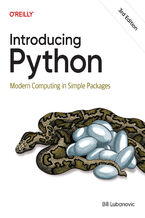 Stuck in a coding conundrum? Whether you're an advanced beginner, an intermediate developer, or a curious newcomer, the complexities of coding can often feel like a labyrinth with no exit. With Python, however, you can start writing real code quickly—but where should you start? In this updated third edition, Bill Lubanovic acts as your personal gu
Stuck in a coding conundrum? Whether you're an advanced beginner, an intermediate developer, or a curious newcomer, the complexities of coding can often feel like a labyrinth with no exit. With Python, however, you can start writing real code quickly—but where should you start? In this updated third edition, Bill Lubanovic acts as your personal gu-
- ePub + Mobi pkt
(143,65 zł najniższa cena z 30 dni)
143.65 zł
169.00 zł (-15%) -
-
Promocja Promocja 2za1
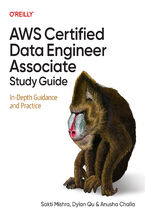 There's no better time to become a data engineer. And acing the AWS Certified Data Engineer Associate (DEA-C01) exam will help you tackle the demands of modern data engineering and secure your place in the technology-driven future. Authors Sakti Mishra, Dylan Qu, and Anusha Challa equip you with the knowledge and sought-after skills necessary to ef
There's no better time to become a data engineer. And acing the AWS Certified Data Engineer Associate (DEA-C01) exam will help you tackle the demands of modern data engineering and secure your place in the technology-driven future. Authors Sakti Mishra, Dylan Qu, and Anusha Challa equip you with the knowledge and sought-after skills necessary to ef-
- ePub + Mobi pkt
(169,14 zł najniższa cena z 30 dni)
169.14 zł
199.00 zł (-15%) -
-
Promocja Promocja 2za1
 AI is transforming software development, shifting programmers from writing code to collaborating with AI in an intent-driven workflow. Vibe coding—a prompt-first, exploratory approach where you describe what you want in natural language and let a large language model fill in the blanks—represents a radical shift in the developer's role from writing
AI is transforming software development, shifting programmers from writing code to collaborating with AI in an intent-driven workflow. Vibe coding—a prompt-first, exploratory approach where you describe what you want in natural language and let a large language model fill in the blanks—represents a radical shift in the developer's role from writing-
- ePub + Mobi pkt
(203,15 zł najniższa cena z 30 dni)
203.15 zł
239.00 zł (-15%) -
-
Promocja Promocja 2za1
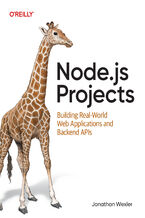 Whether you're a JavaScript beginner ready to build your first backend app or a self-taught developer looking to grow beyond tutorials, Node.js Projects gives you the hands-on experience you need. Through a series of self-contained projects ranging from content aggregators to secure password managers, web scrapers, ML-backed analysis, and an AI-pow
Whether you're a JavaScript beginner ready to build your first backend app or a self-taught developer looking to grow beyond tutorials, Node.js Projects gives you the hands-on experience you need. Through a series of self-contained projects ranging from content aggregators to secure password managers, web scrapers, ML-backed analysis, and an AI-pow-
- ePub + Mobi pkt
(169,14 zł najniższa cena z 30 dni)
169.14 zł
199.00 zł (-15%) -
-
Promocja Promocja 2za1
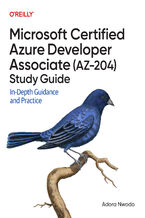 The transition to cloud computing has created unprecedented demand for professionals with the skills to implement solutions that take advantage of the scalability, flexibility, and resilience the cloud offers. The Microsoft Certified Azure Developer Associate Study Guide, is your comprehensive resource for mastering the competencies required to des
The transition to cloud computing has created unprecedented demand for professionals with the skills to implement solutions that take advantage of the scalability, flexibility, and resilience the cloud offers. The Microsoft Certified Azure Developer Associate Study Guide, is your comprehensive resource for mastering the competencies required to des-
- ePub + Mobi pkt
(169,14 zł najniższa cena z 30 dni)
169.14 zł
199.00 zł (-15%) -
-
Promocja Promocja 2za1
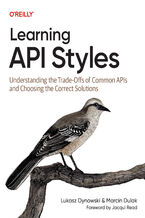 An application programming interface (API) enables data exchange in systems such as web applications, microservices, and IoT devices. In this hands-on book, authors Lukasz Dynowski and Marcin Dulak show software developers and architects how to design and implement REST, GraphQL, gRPC, webhooks, WebSocket, messaging APIs, and more. This book look
An application programming interface (API) enables data exchange in systems such as web applications, microservices, and IoT devices. In this hands-on book, authors Lukasz Dynowski and Marcin Dulak show software developers and architects how to design and implement REST, GraphQL, gRPC, webhooks, WebSocket, messaging APIs, and more. This book look-
- ePub + Mobi pkt
(203,15 zł najniższa cena z 30 dni)
203.15 zł
239.00 zł (-15%) -
-
Promocja Promocja 2za1
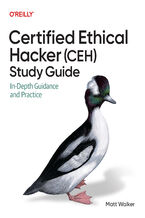 The CEH exam is not an enjoyable undertaking. This grueling, exhaustive, challenging, and taxing exam will either leave you better prepared to be the best cyber security professional you can be. But preparing for the exam itself needn't be that way. In this book, IT security and education professional Matt Walker will not only guide you through ev
The CEH exam is not an enjoyable undertaking. This grueling, exhaustive, challenging, and taxing exam will either leave you better prepared to be the best cyber security professional you can be. But preparing for the exam itself needn't be that way. In this book, IT security and education professional Matt Walker will not only guide you through ev-
- ePub + Mobi pkt
(186,15 zł najniższa cena z 30 dni)
186.15 zł
219.00 zł (-15%) -
-
Promocja Promocja 2za1
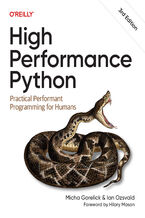 Your Python code may run correctly, but what if you need it to run faster? This practical book shows you how to locate performance bottlenecks and significantly speed up your code in high-data-volume programs. By explaining the fundamental theory behind design choices, this expanded edition of High Performance Python helps experienced Python progra
Your Python code may run correctly, but what if you need it to run faster? This practical book shows you how to locate performance bottlenecks and significantly speed up your code in high-data-volume programs. By explaining the fundamental theory behind design choices, this expanded edition of High Performance Python helps experienced Python progra-
- ePub + Mobi pkt
(186,15 zł najniższa cena z 30 dni)
186.15 zł
219.00 zł (-15%) -
-
Promocja Promocja 2za1
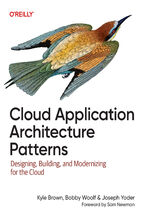 There are more applications running in the cloud than there are ones that run well there. If you're considering taking advantage of cloud technology for your company's projects, this practical guide is an ideal way to understand the best practices that will help you architect applications that work well in the cloud, no matter which vendors, produc
There are more applications running in the cloud than there are ones that run well there. If you're considering taking advantage of cloud technology for your company's projects, this practical guide is an ideal way to understand the best practices that will help you architect applications that work well in the cloud, no matter which vendors, produc-
- ePub + Mobi pkt
(160,65 zł najniższa cena z 30 dni)
160.65 zł
189.00 zł (-15%) -
-
Promocja Promocja 2za1
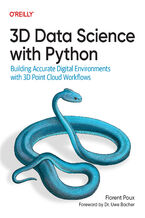 Our physical world is grounded in three dimensions. To create technology that can reason about and interact with it, our data must be 3D too. This practical guide offers data scientists, engineers, and researchers a hands-on approach to working with 3D data using Python. From 3D reconstruction to 3D deep learning techniques, you'll learn how to ext
Our physical world is grounded in three dimensions. To create technology that can reason about and interact with it, our data must be 3D too. This practical guide offers data scientists, engineers, and researchers a hands-on approach to working with 3D data using Python. From 3D reconstruction to 3D deep learning techniques, you'll learn how to ext-
- ePub + Mobi pkt
(228,65 zł najniższa cena z 30 dni)
228.65 zł
269.00 zł (-15%) -
Dzięki opcji "Druk na żądanie" do sprzedaży wracają tytuły Grupy Helion, które cieszyły sie dużym zainteresowaniem, a których nakład został wyprzedany.
Dla naszych Czytelników wydrukowaliśmy dodatkową pulę egzemplarzy w technice druku cyfrowego.
Co powinieneś wiedzieć o usłudze "Druk na żądanie":
- usługa obejmuje tylko widoczną poniżej listę tytułów, którą na bieżąco aktualizujemy;
- cena książki może być wyższa od początkowej ceny detalicznej, co jest spowodowane kosztami druku cyfrowego (wyższymi niż koszty tradycyjnego druku offsetowego). Obowiązująca cena jest zawsze podawana na stronie WWW książki;
- zawartość książki wraz z dodatkami (płyta CD, DVD) odpowiada jej pierwotnemu wydaniu i jest w pełni komplementarna;
- usługa nie obejmuje książek w kolorze.
Masz pytanie o konkretny tytuł? Napisz do nas: sklep@helion.pl
Książka drukowana


Postaraj się złożyć zamówienie do godziny 13:00, w dniach:
18. grudnia (Poczta Polska),
19. grudnia (Paczka w Ruchu),
22. grudnia (paczkomaty InPost),
22. grudnia (DPD punkty).
22. grudnia (DPD Kurier).









Oceny i opinie klientów: A+, Network+, Security+ Exams in a Nutshell. A Desktop Quick Reference Pawan K. Bhardwaj
(0)